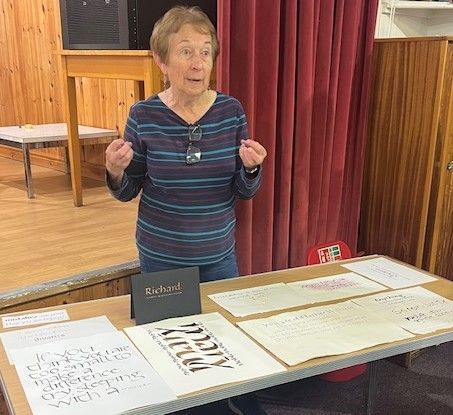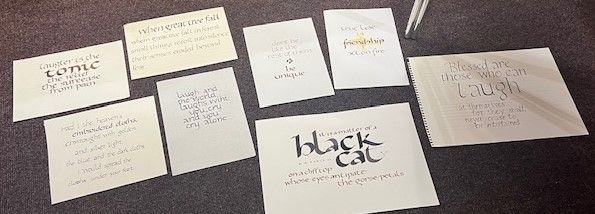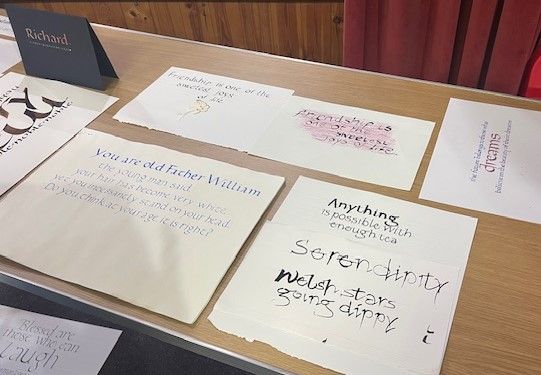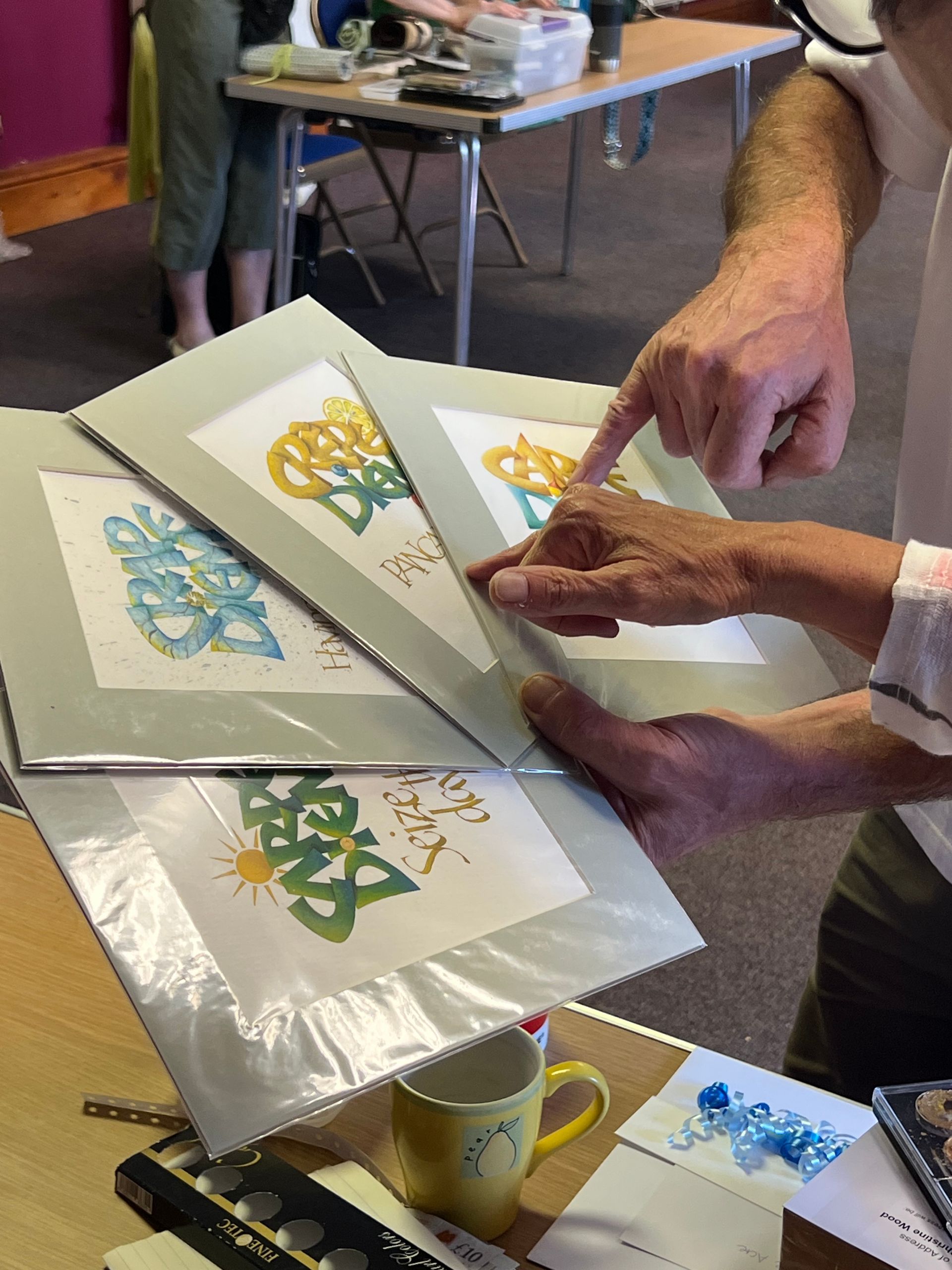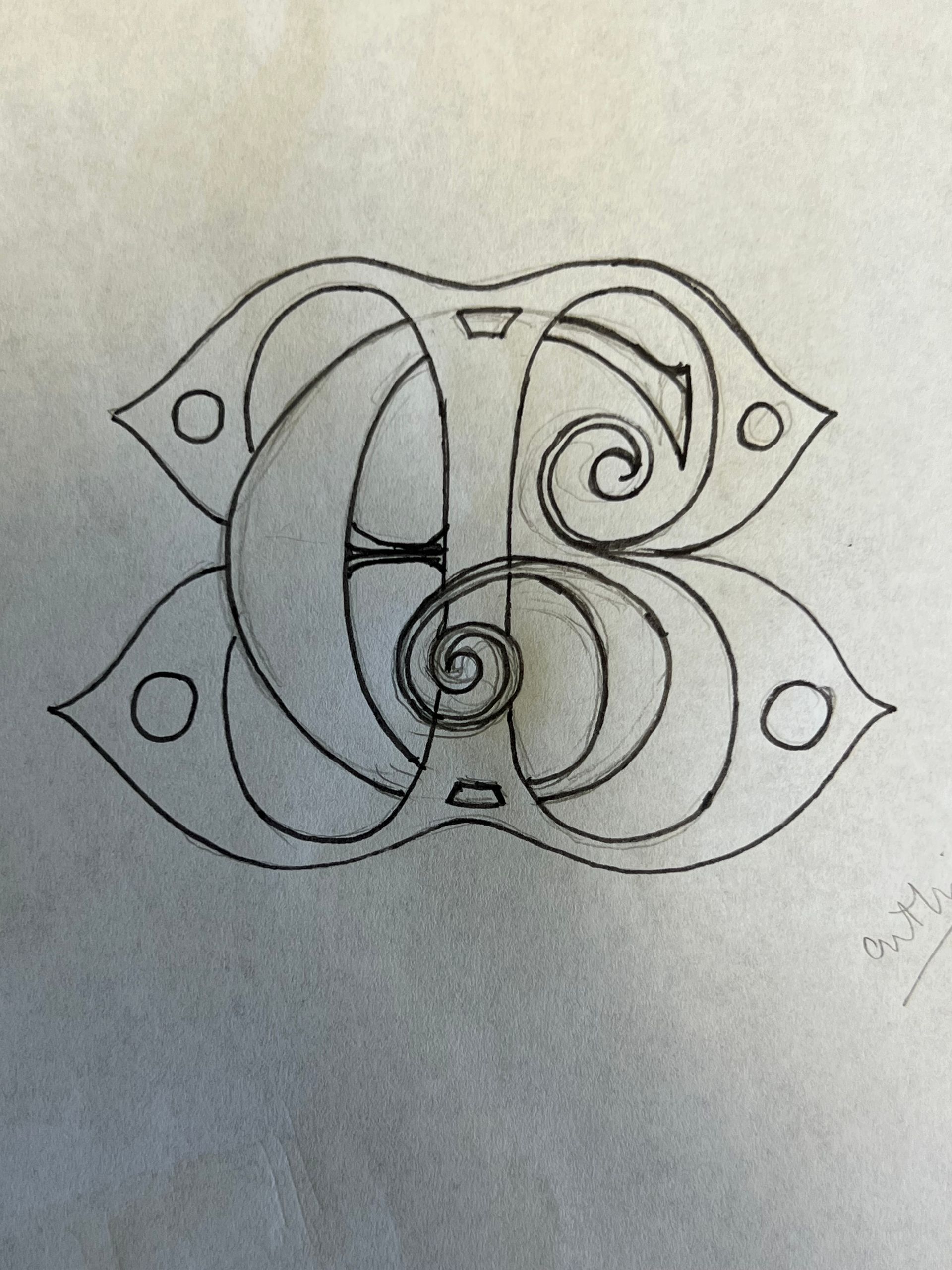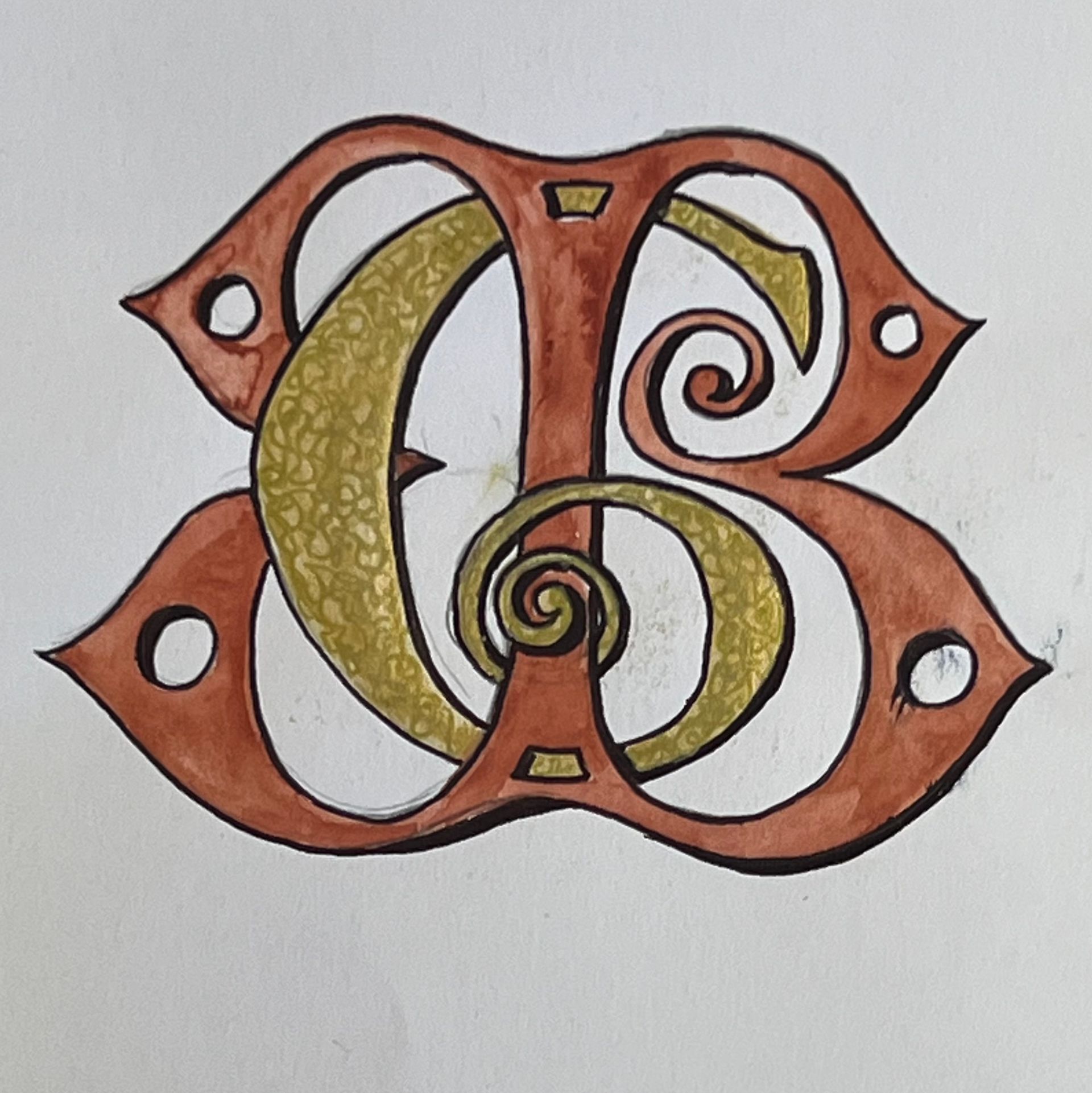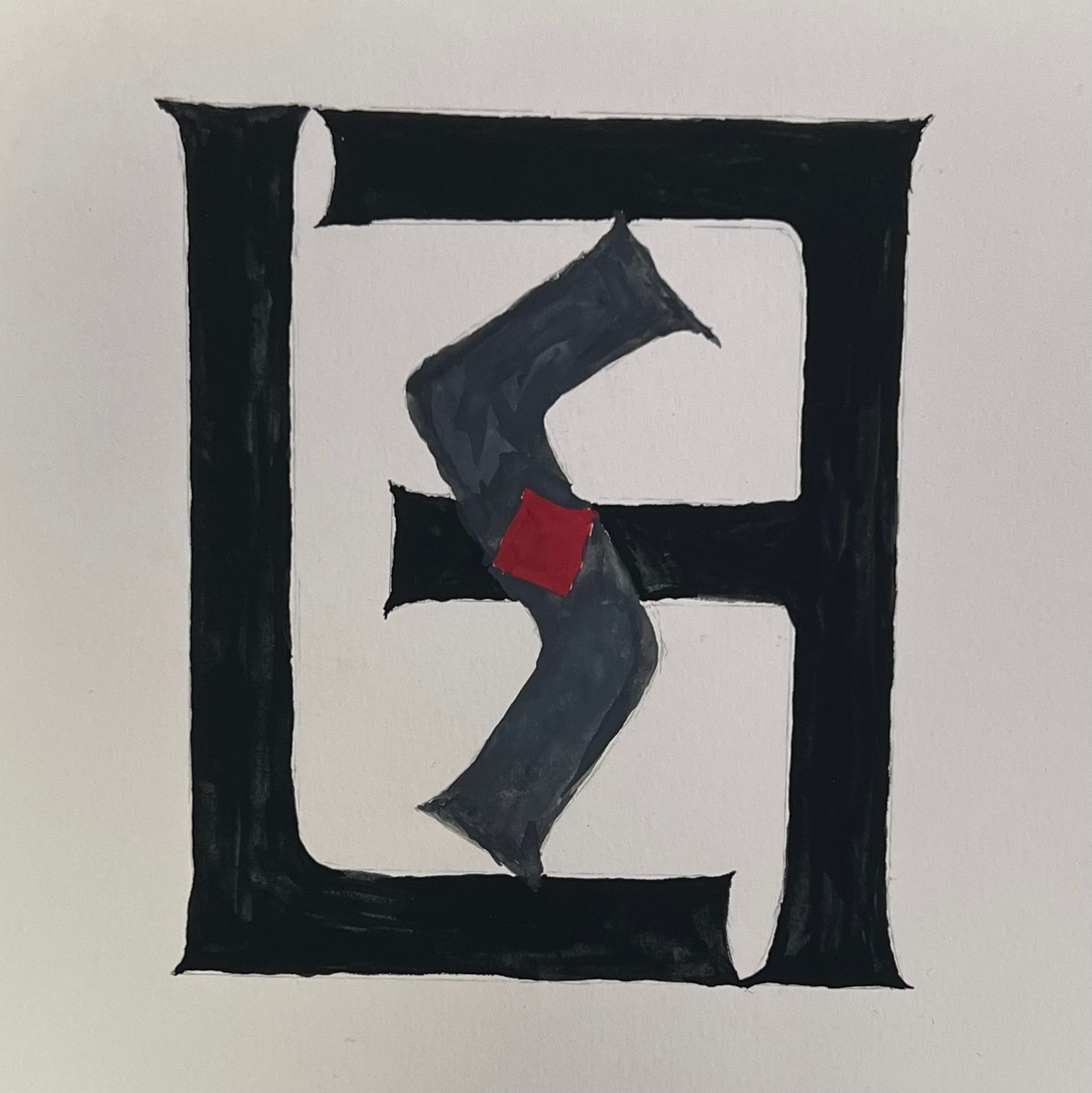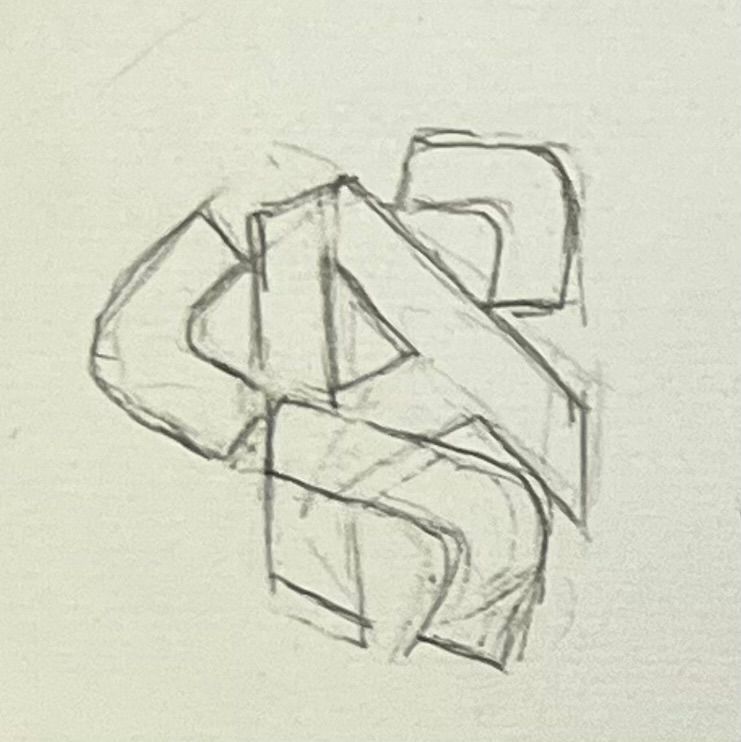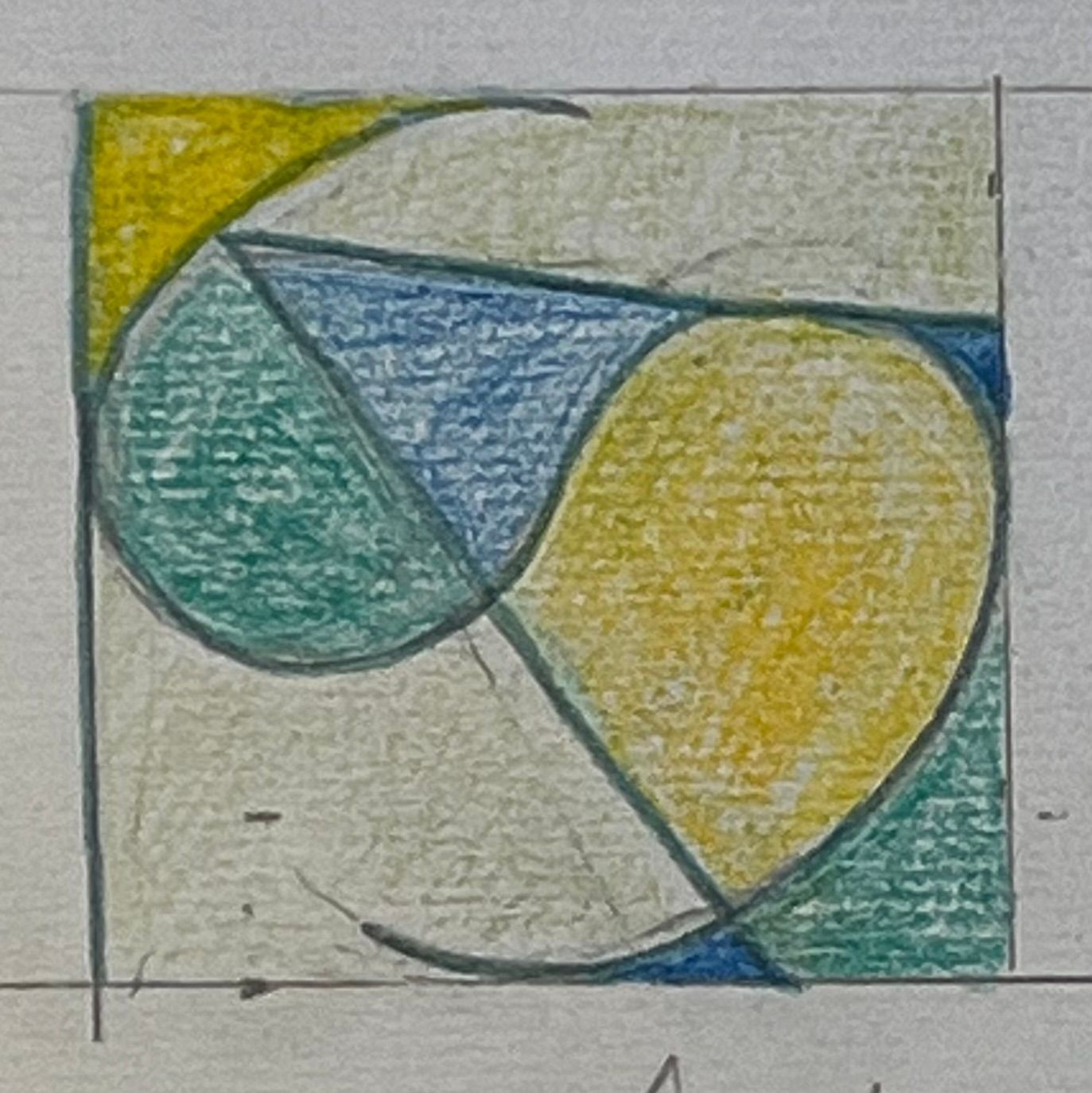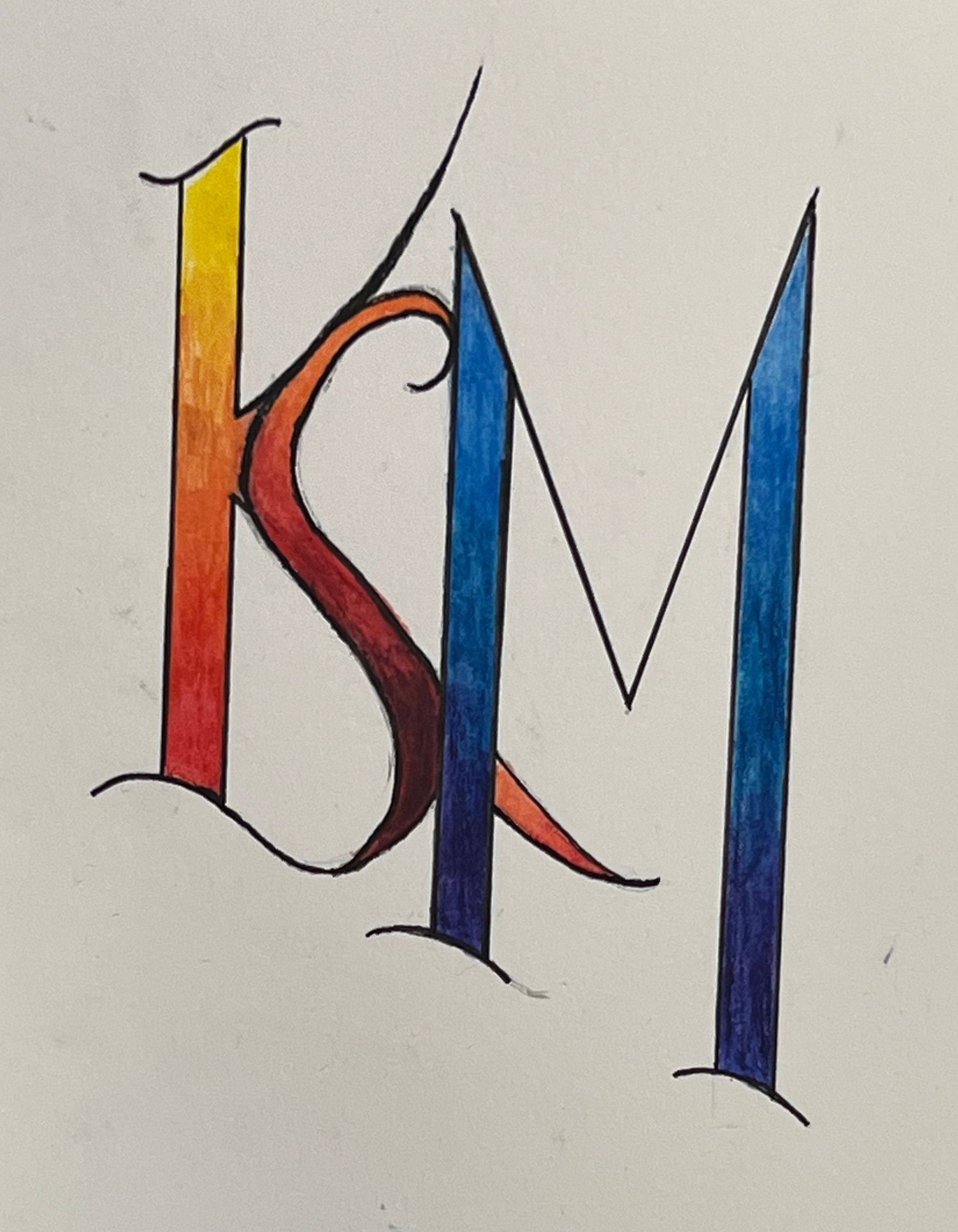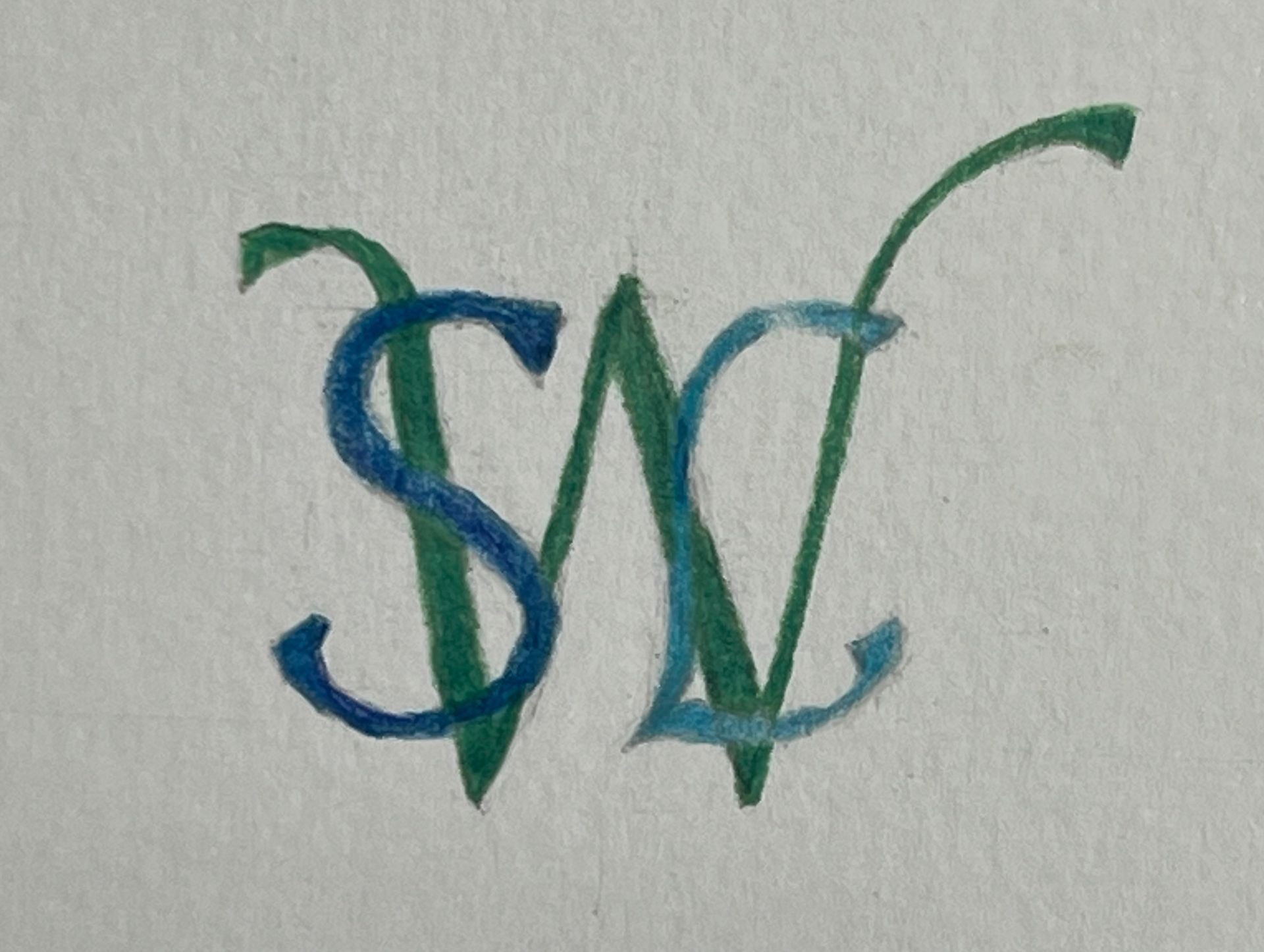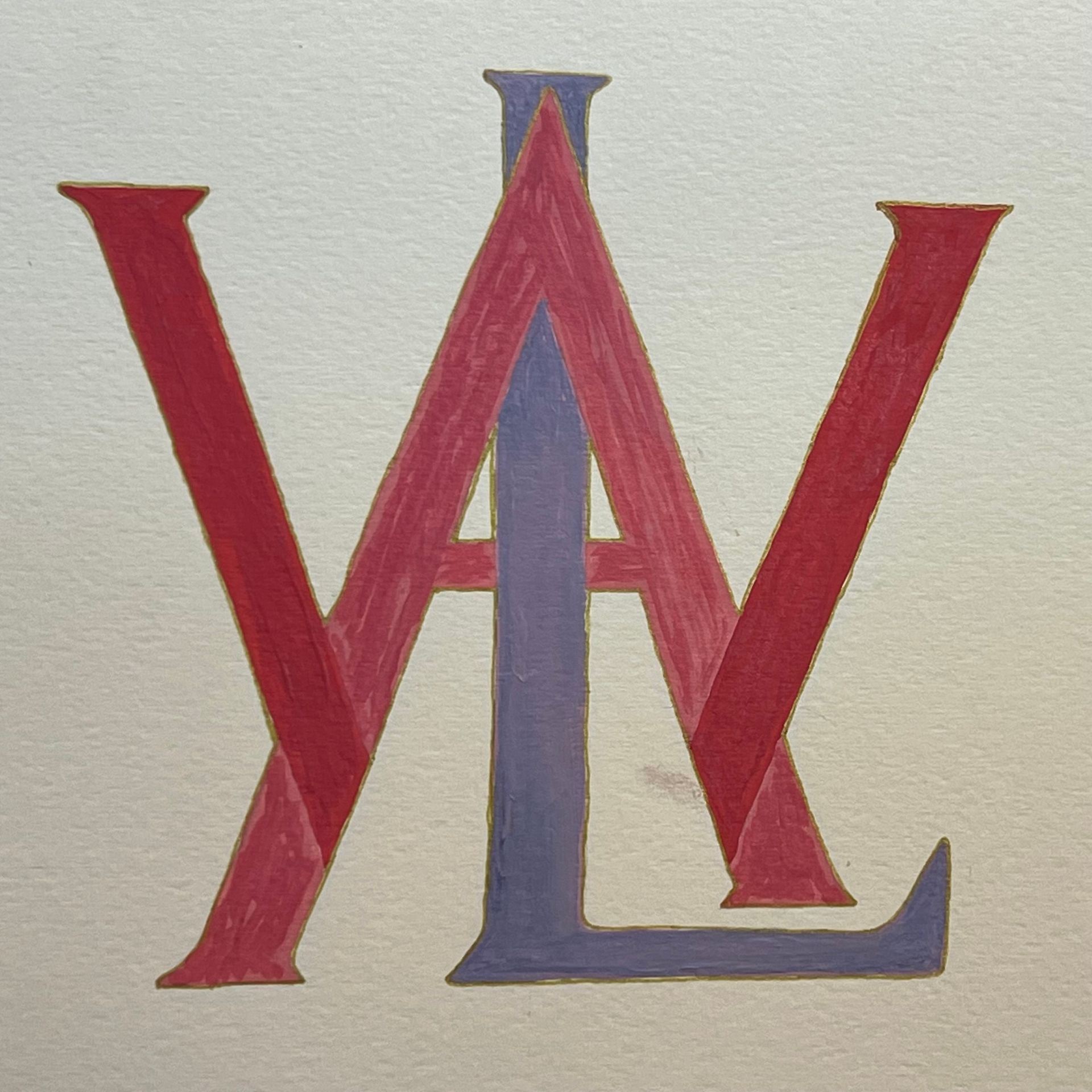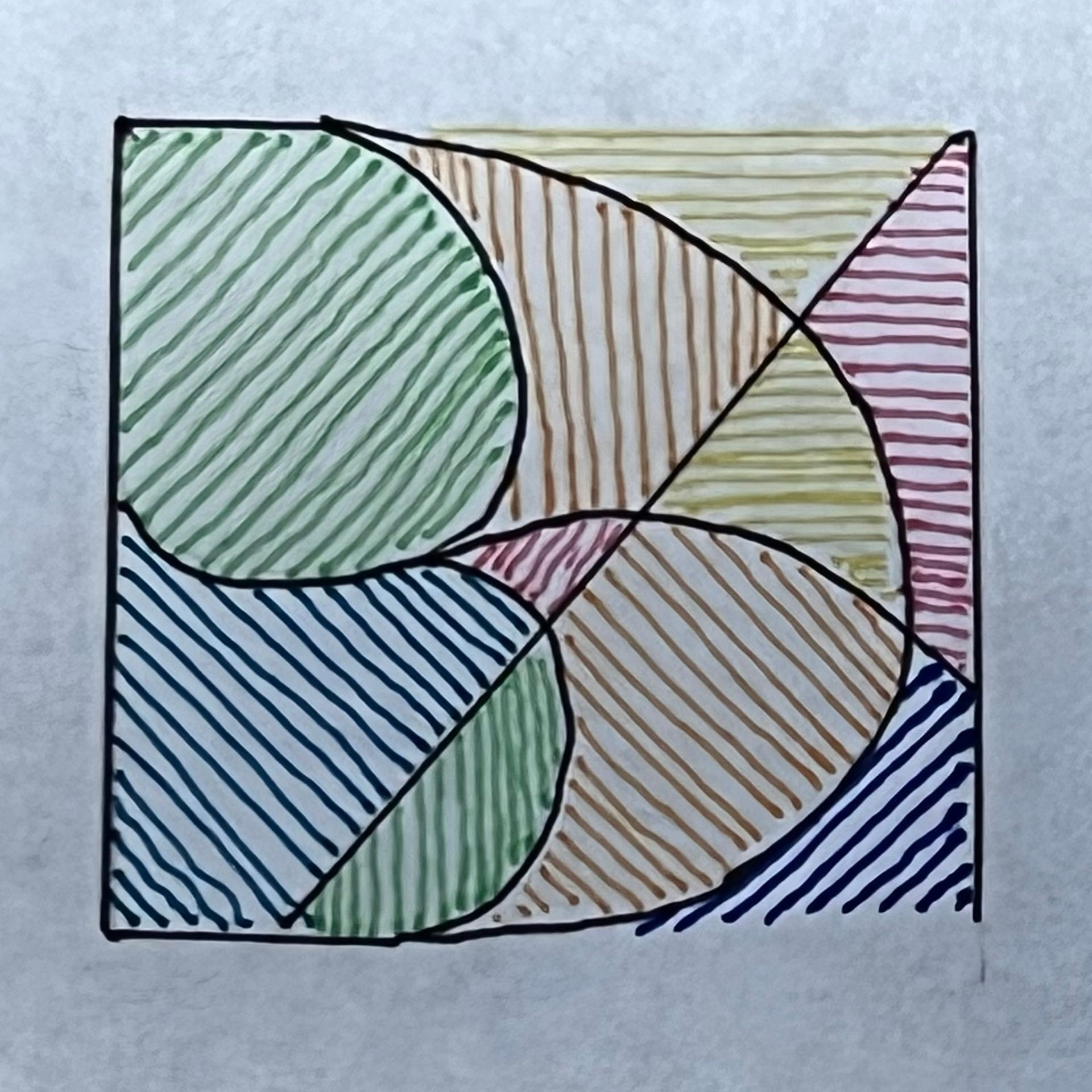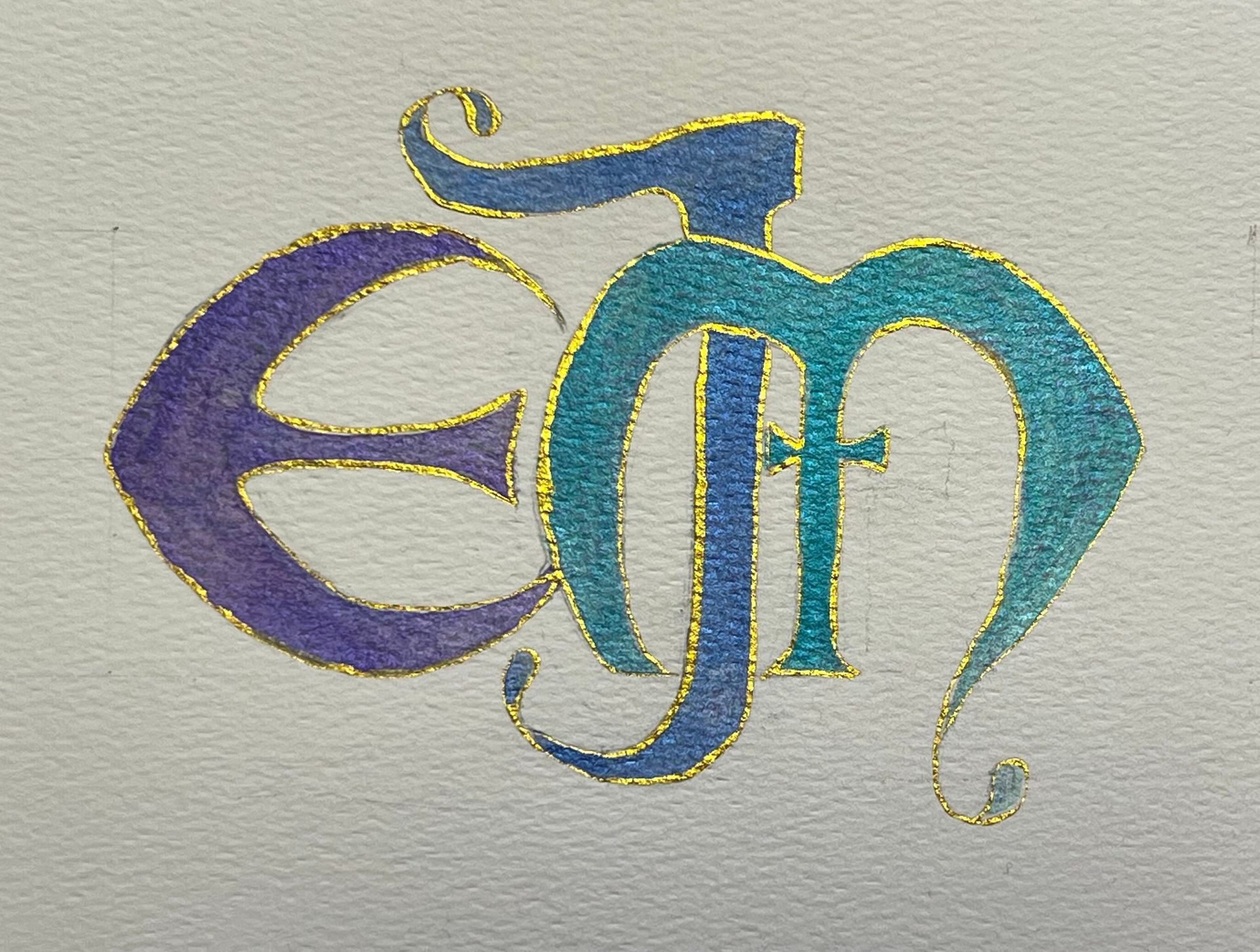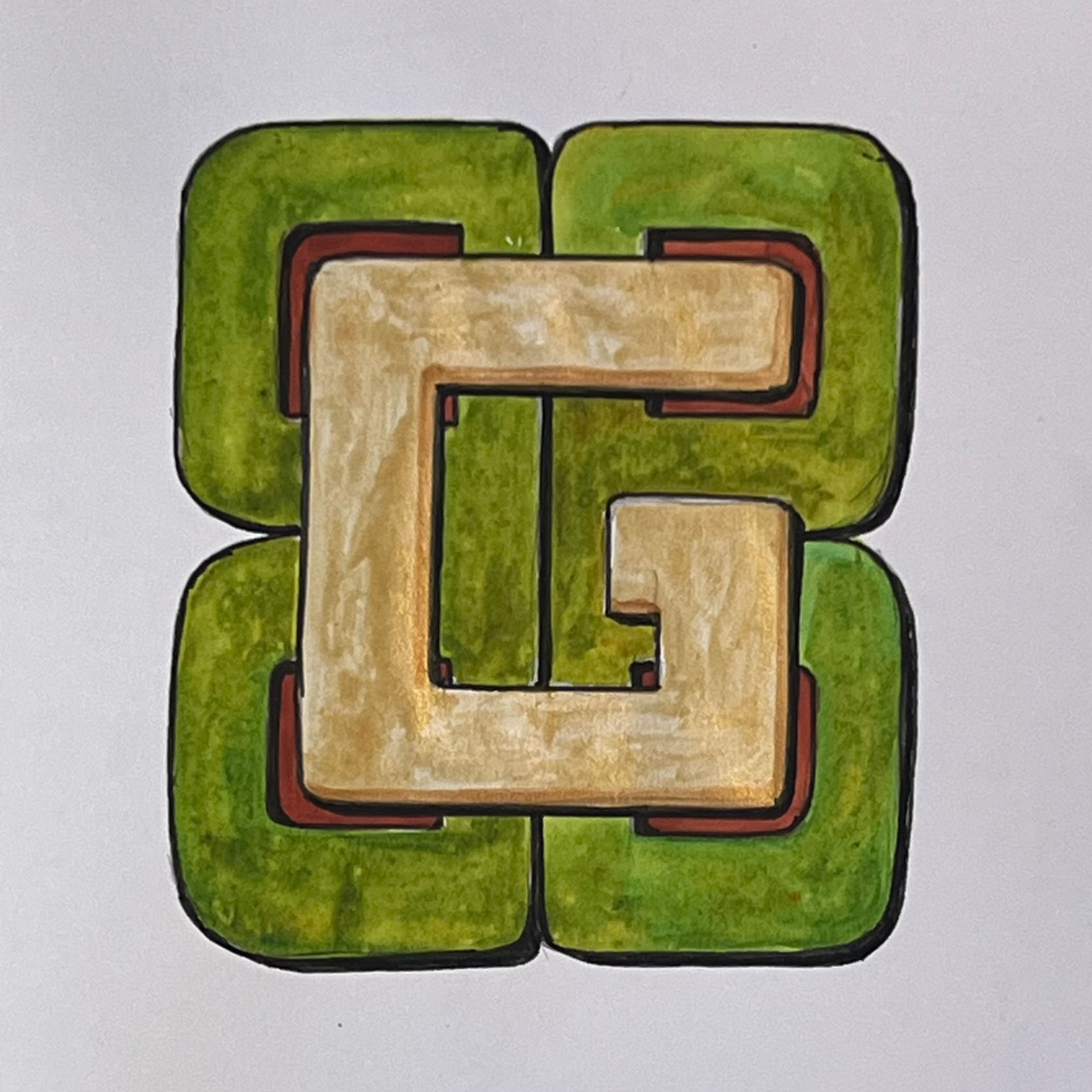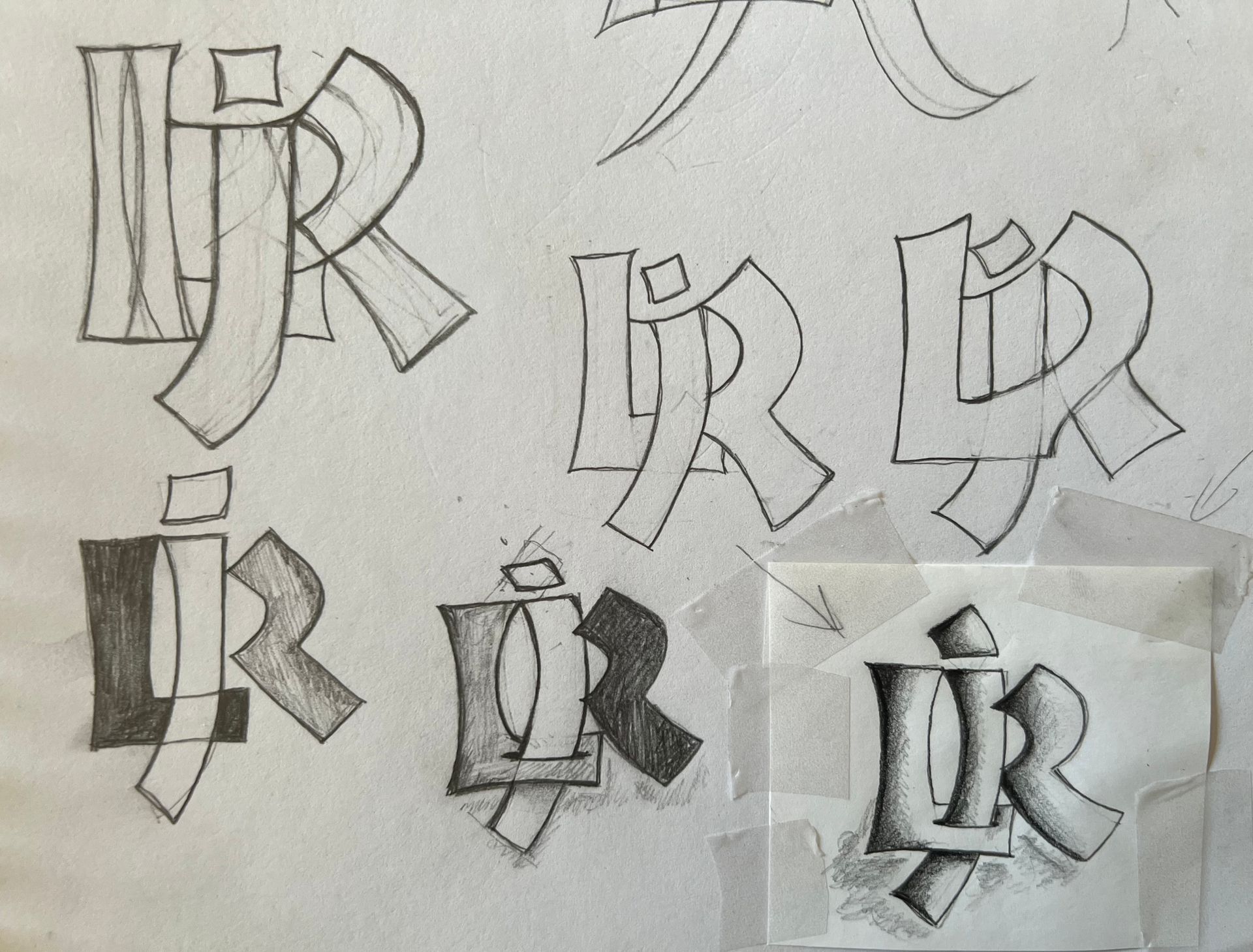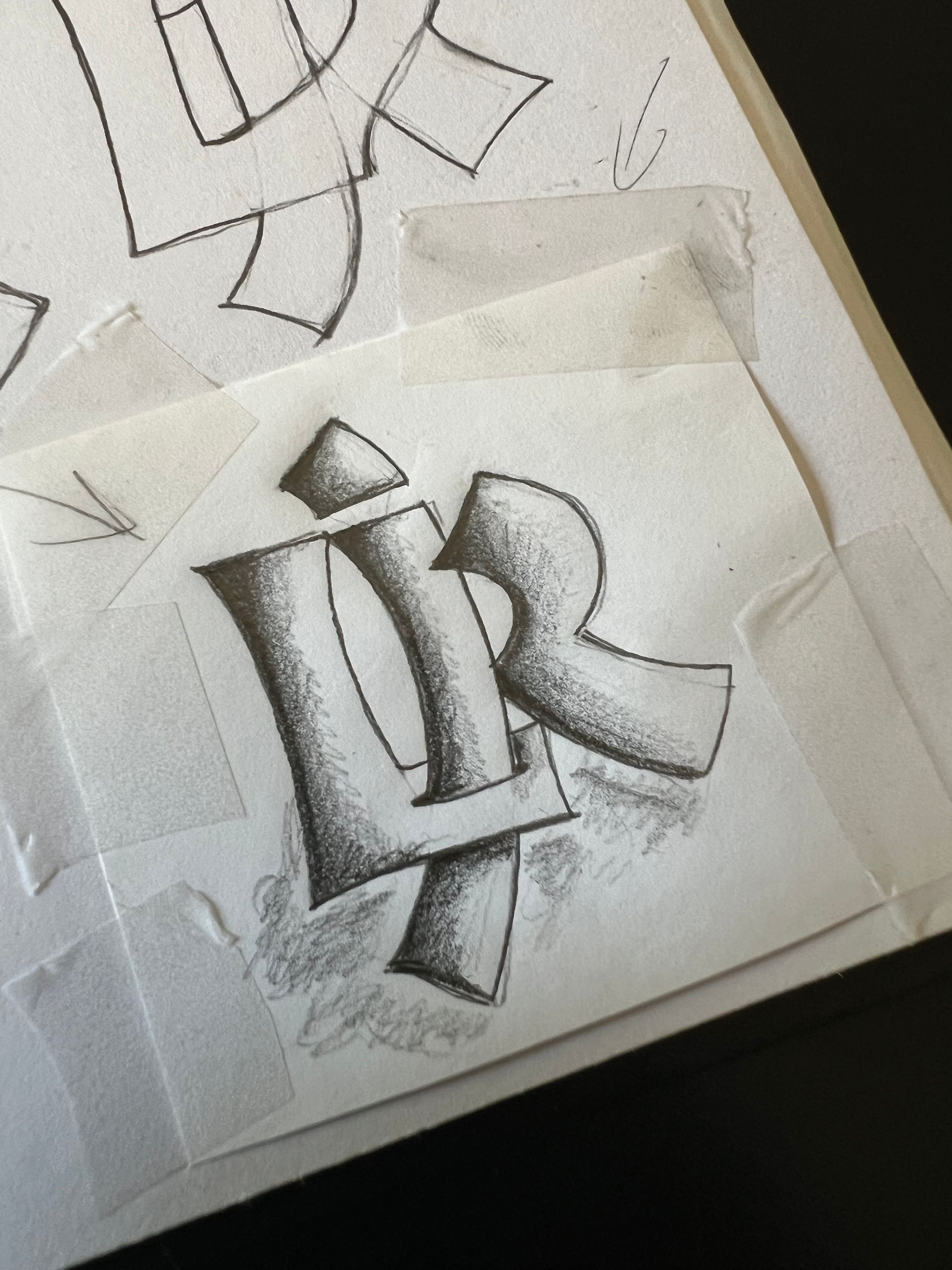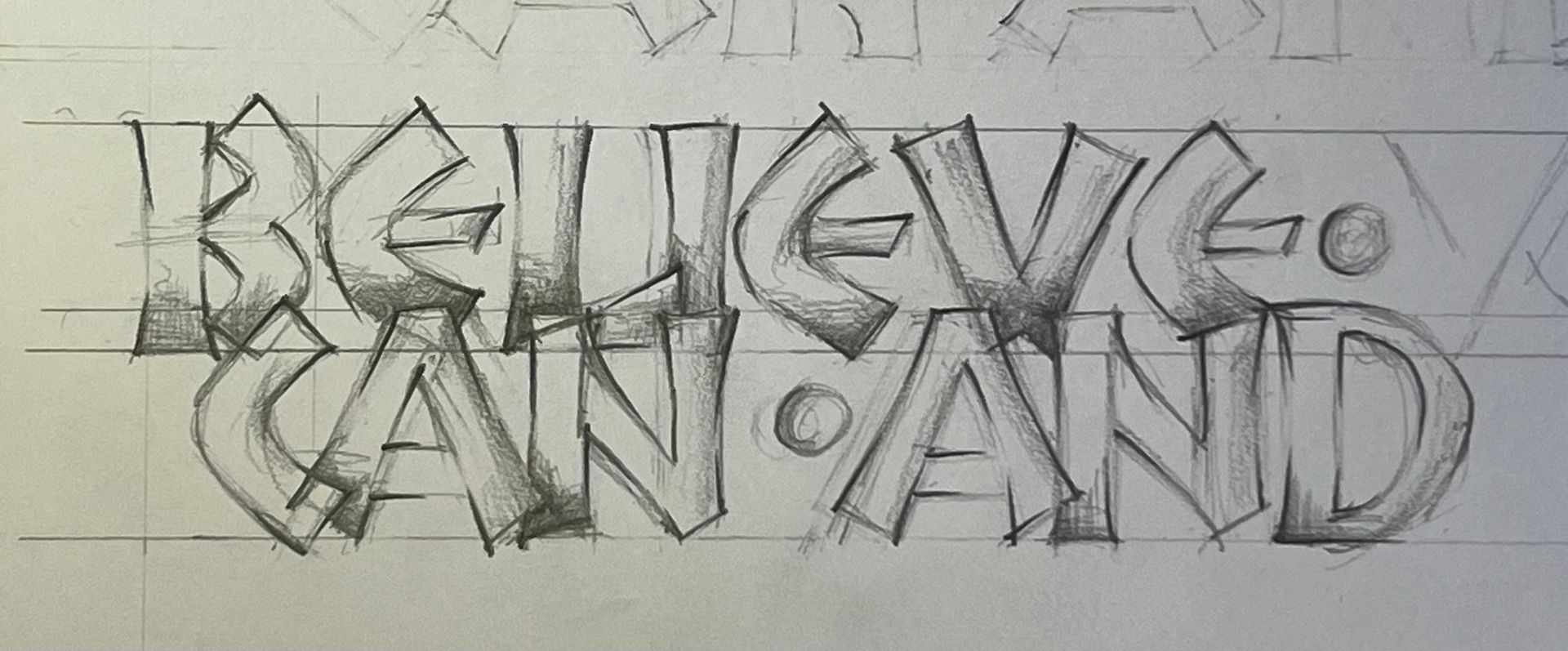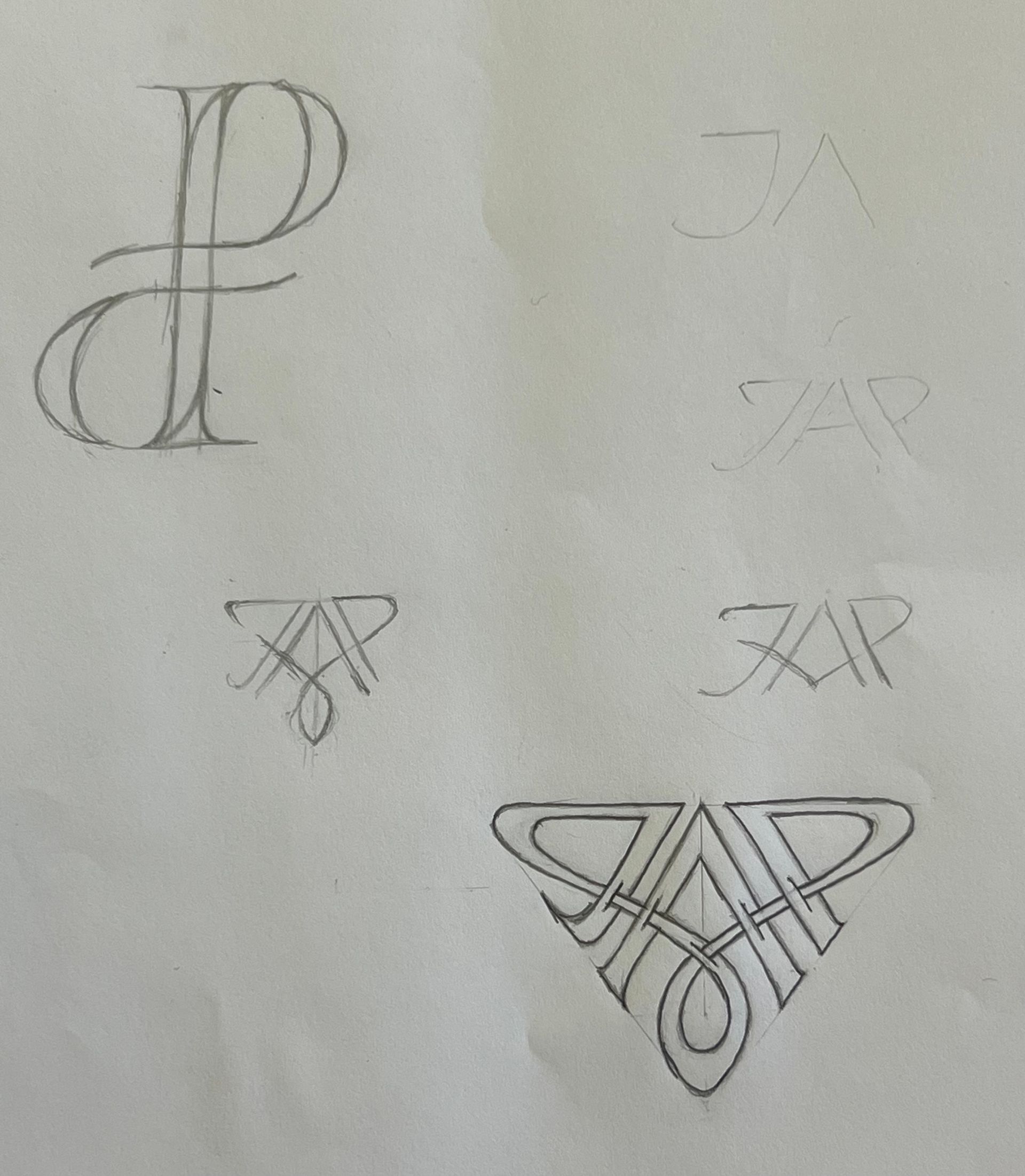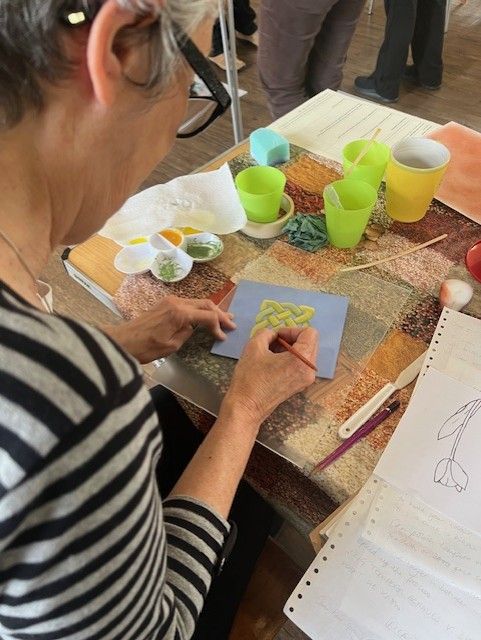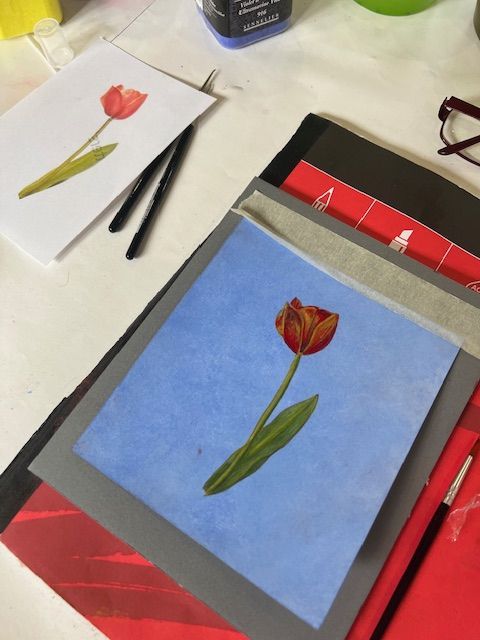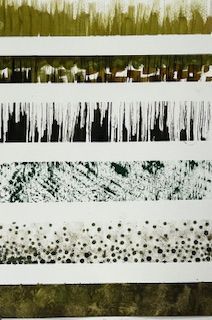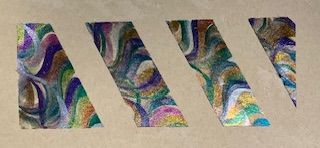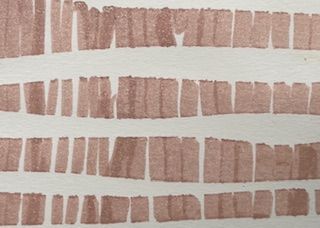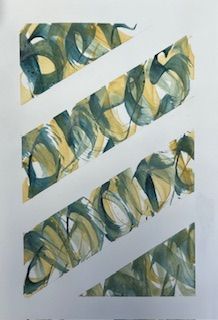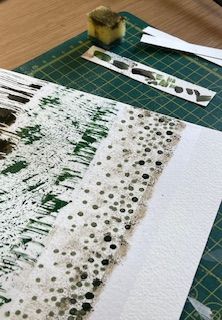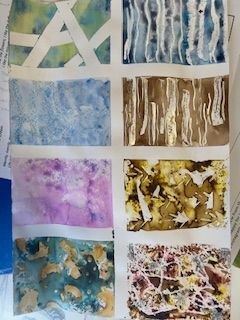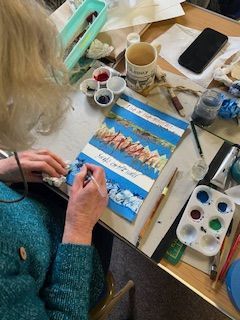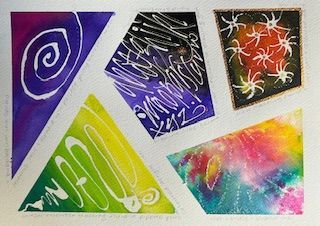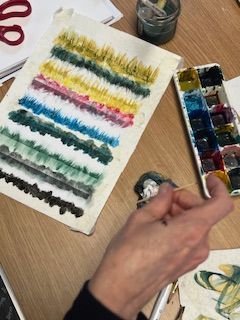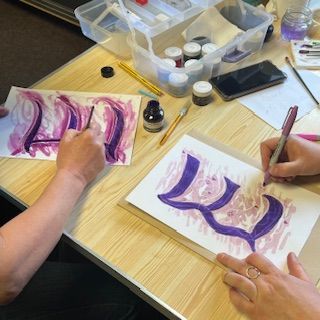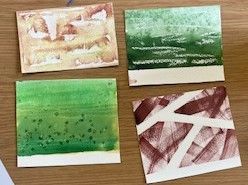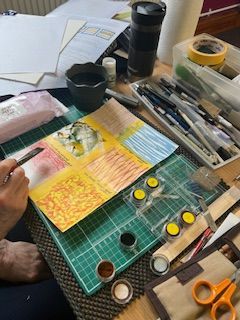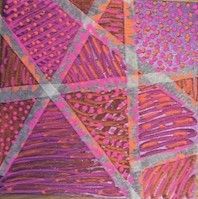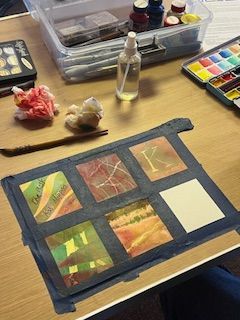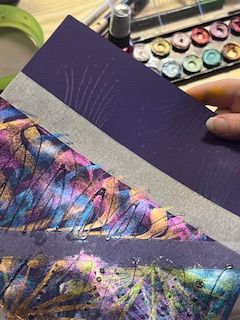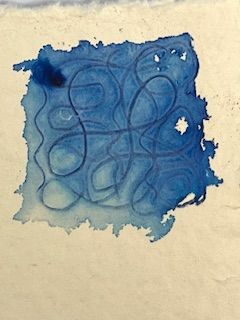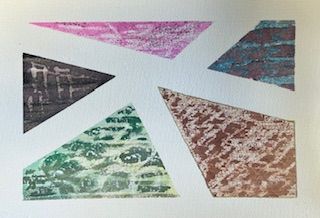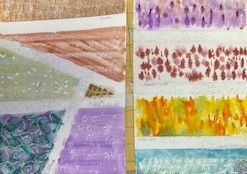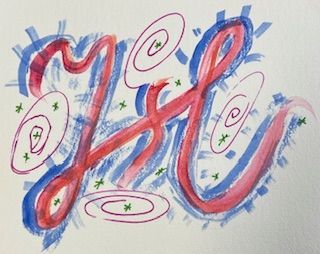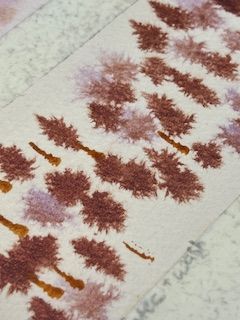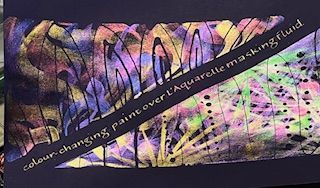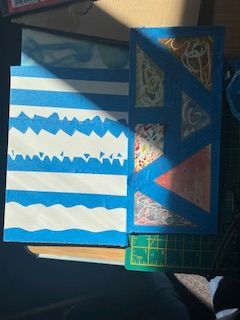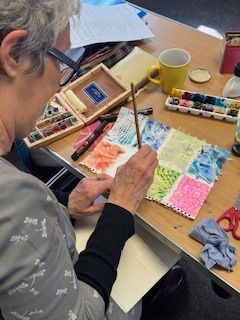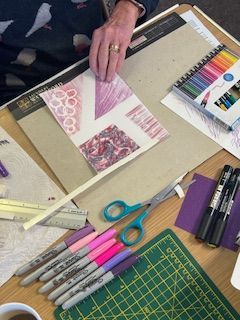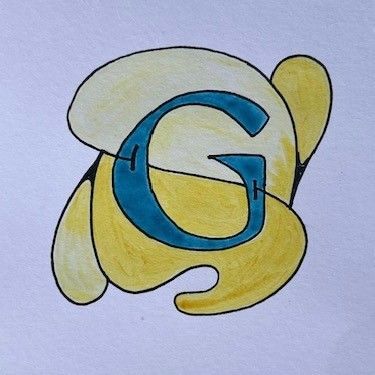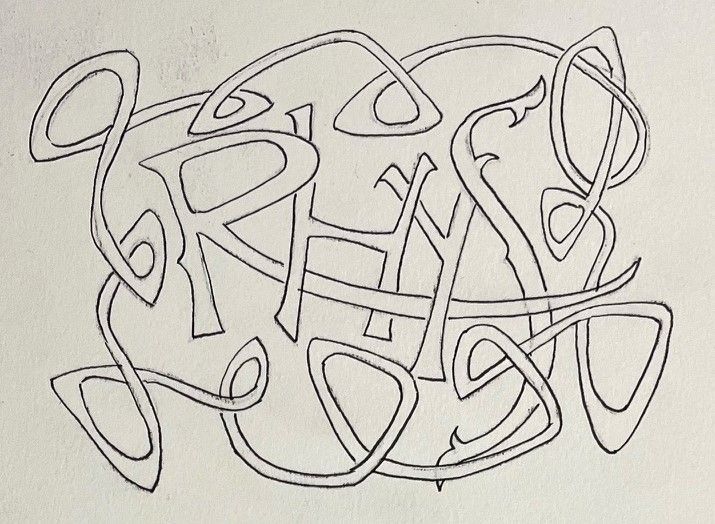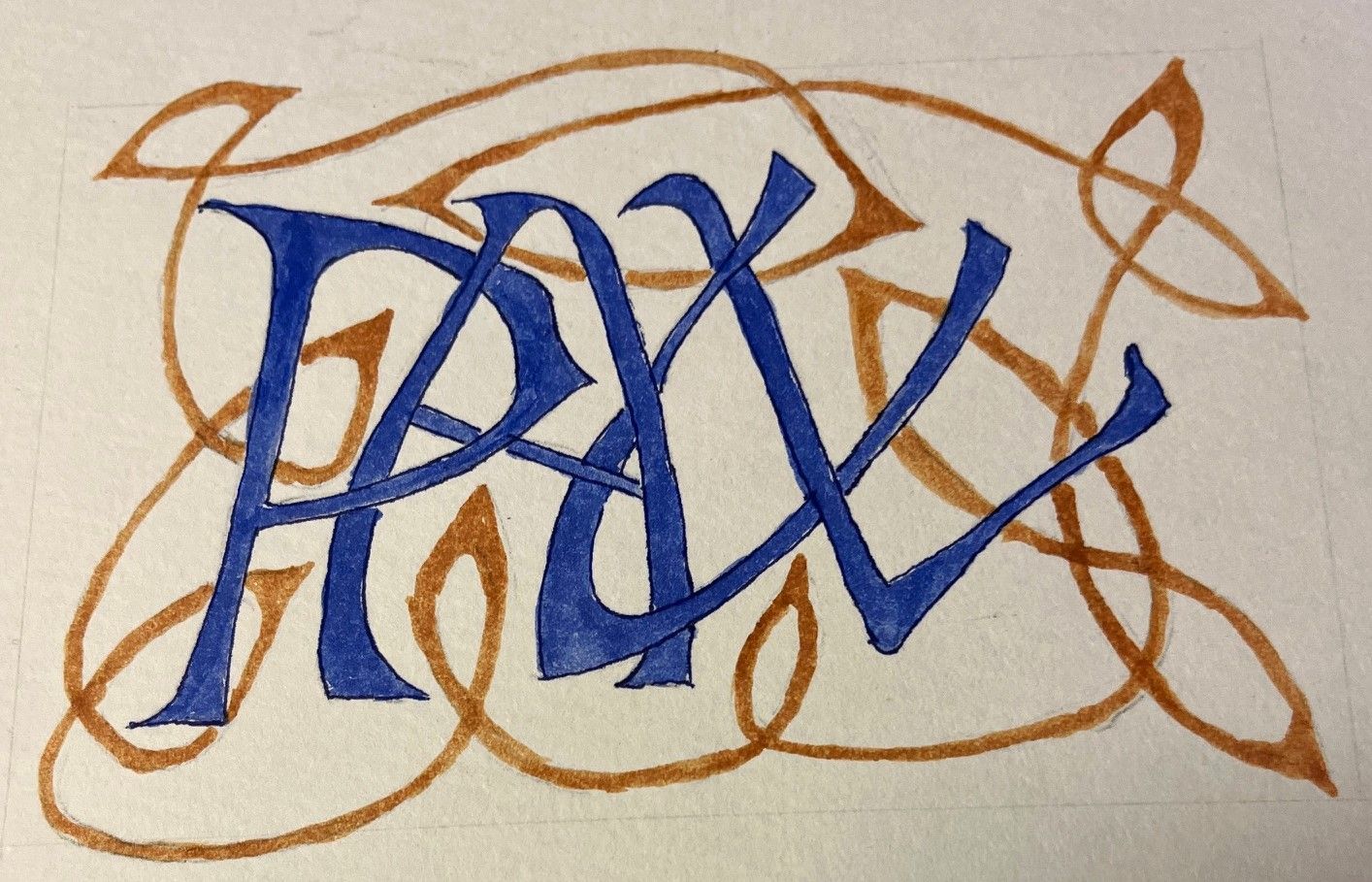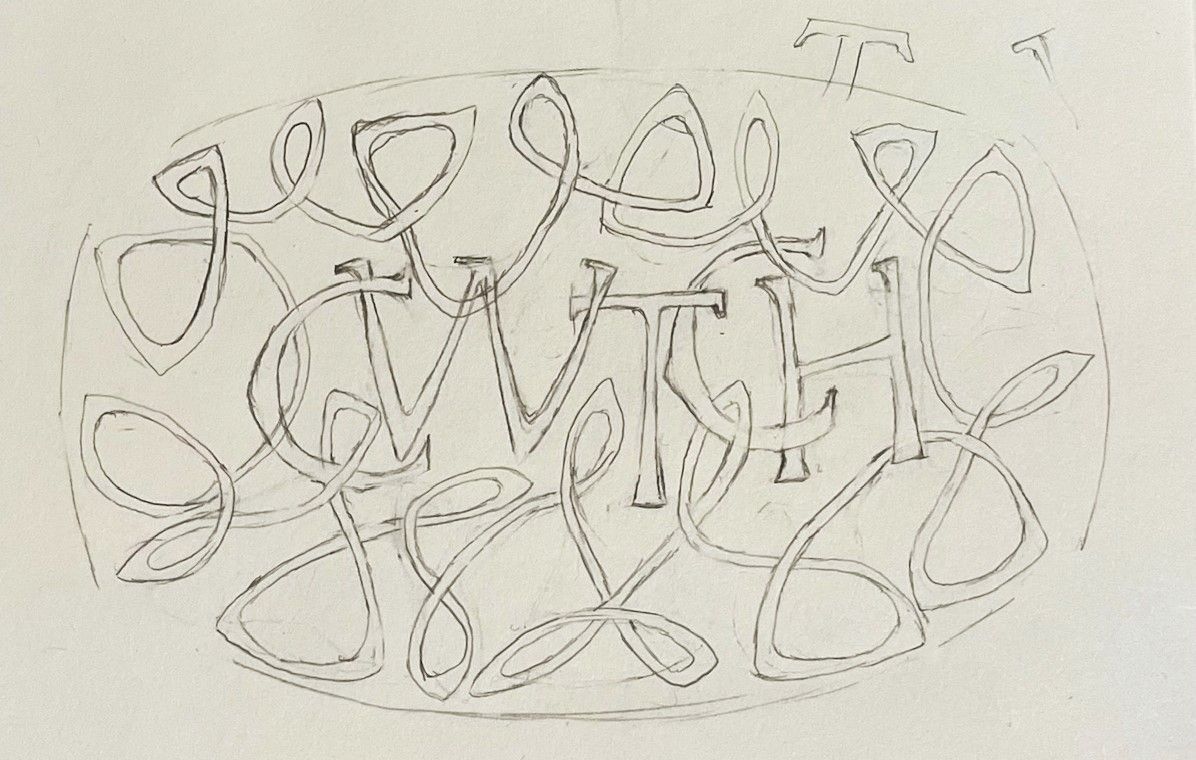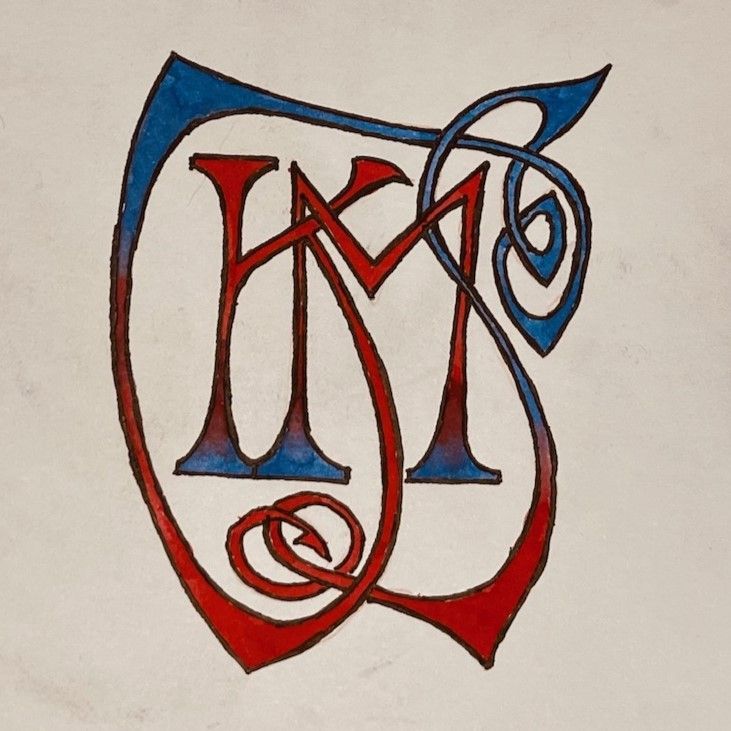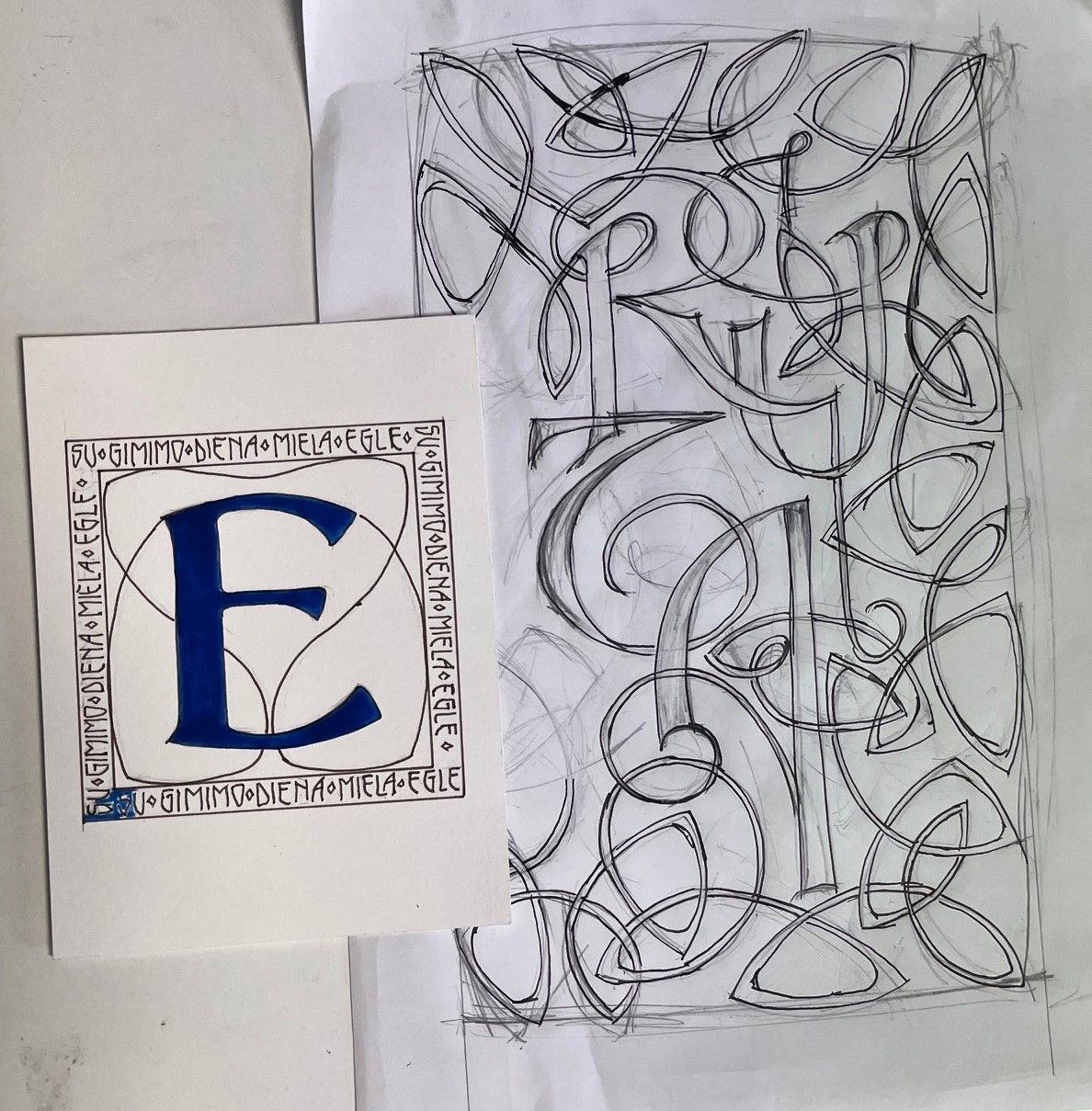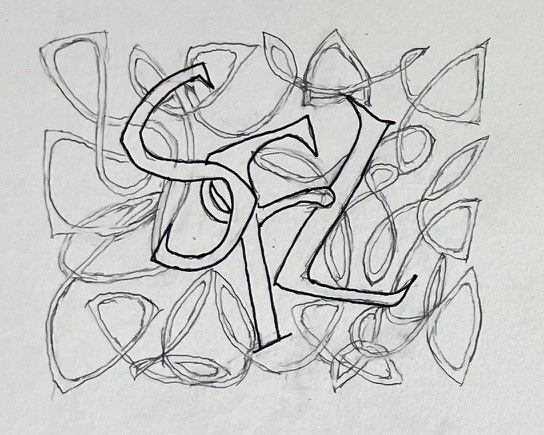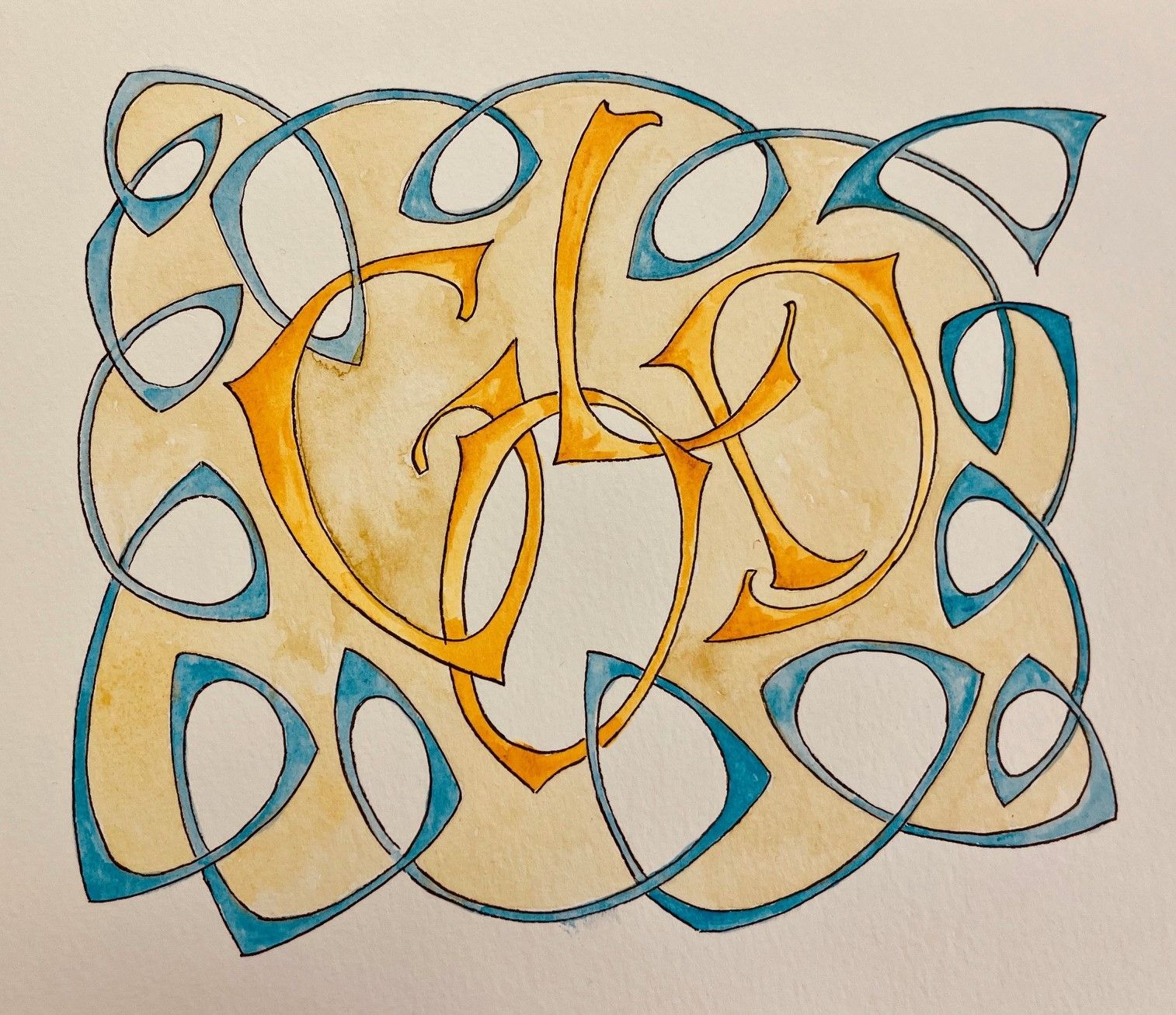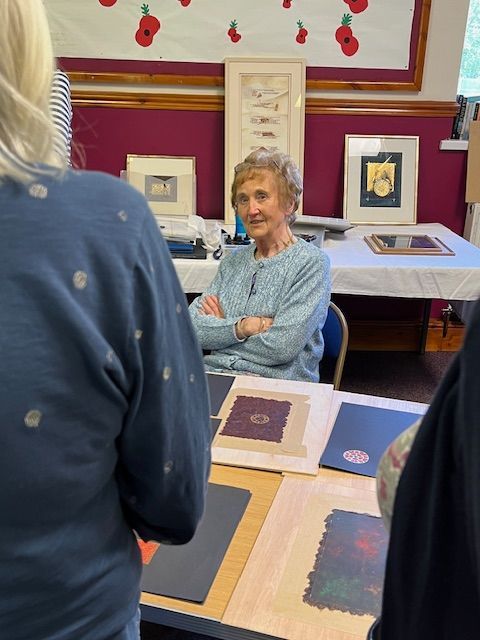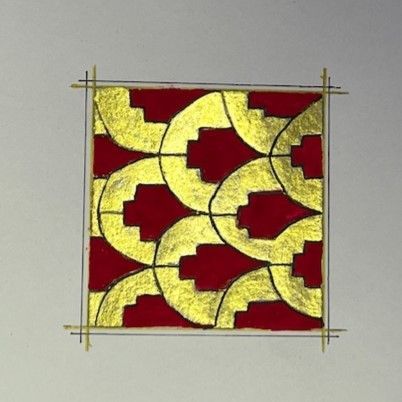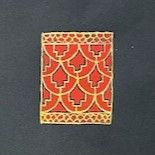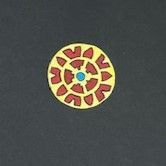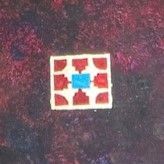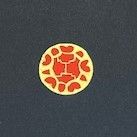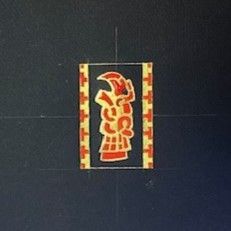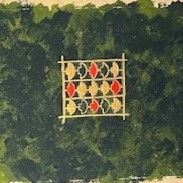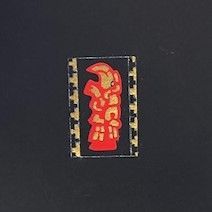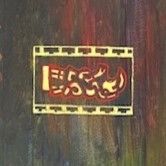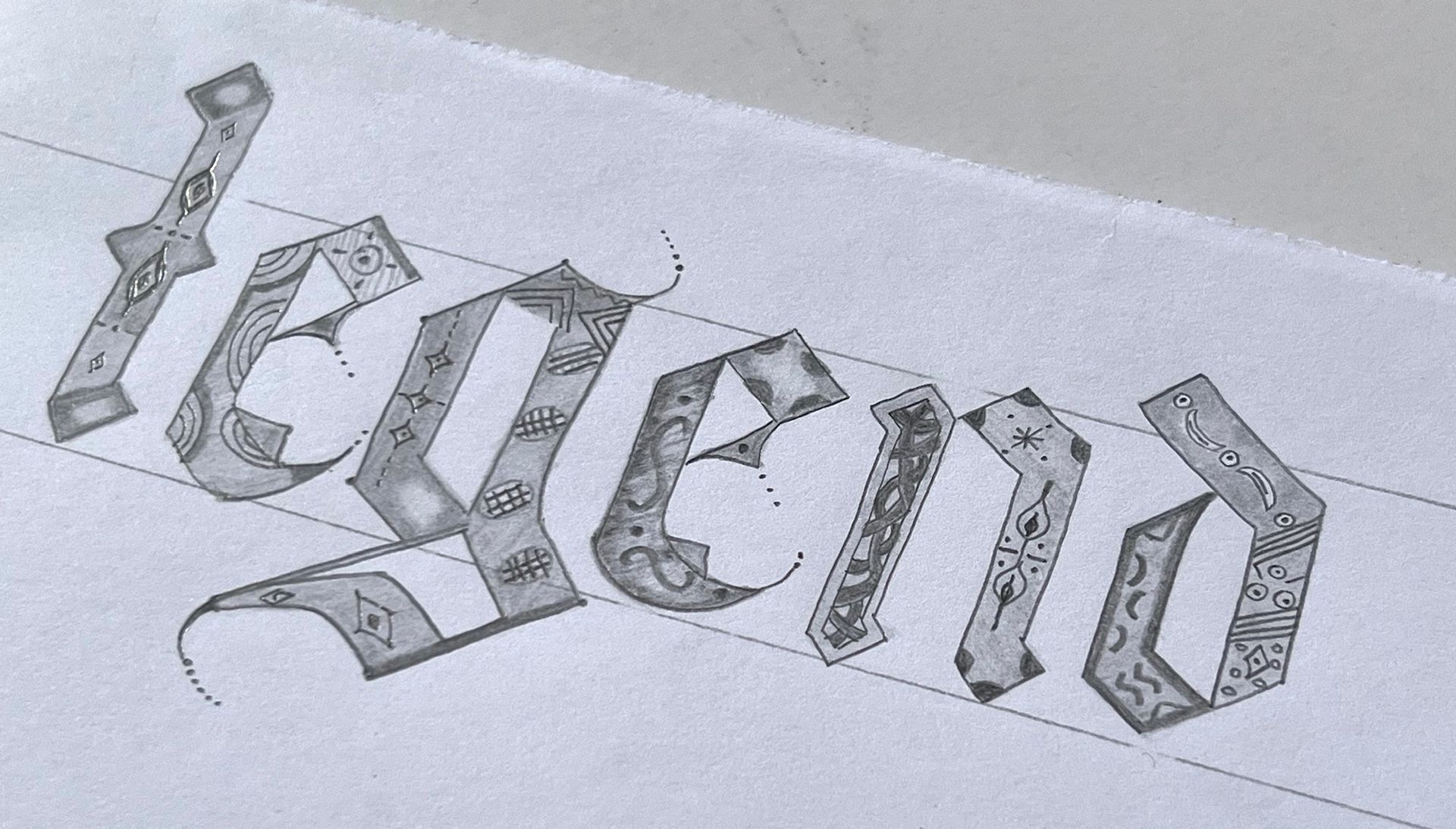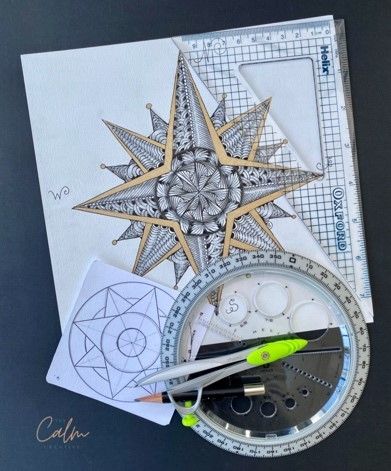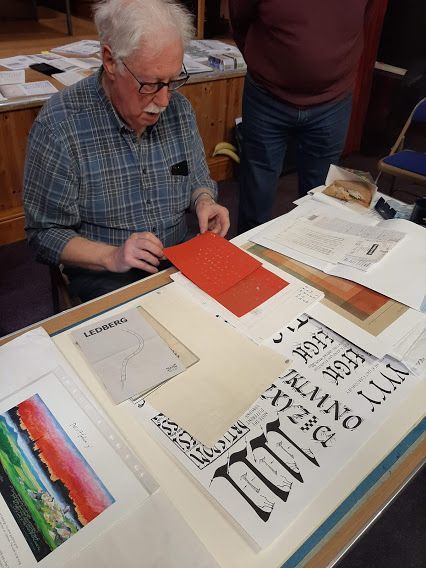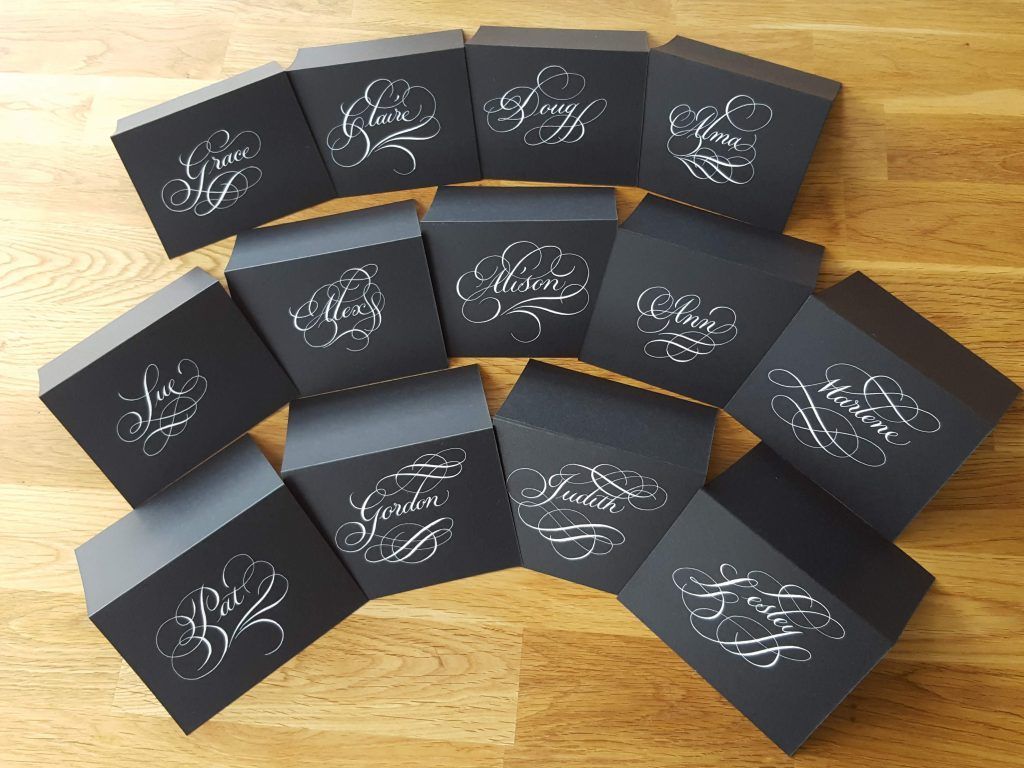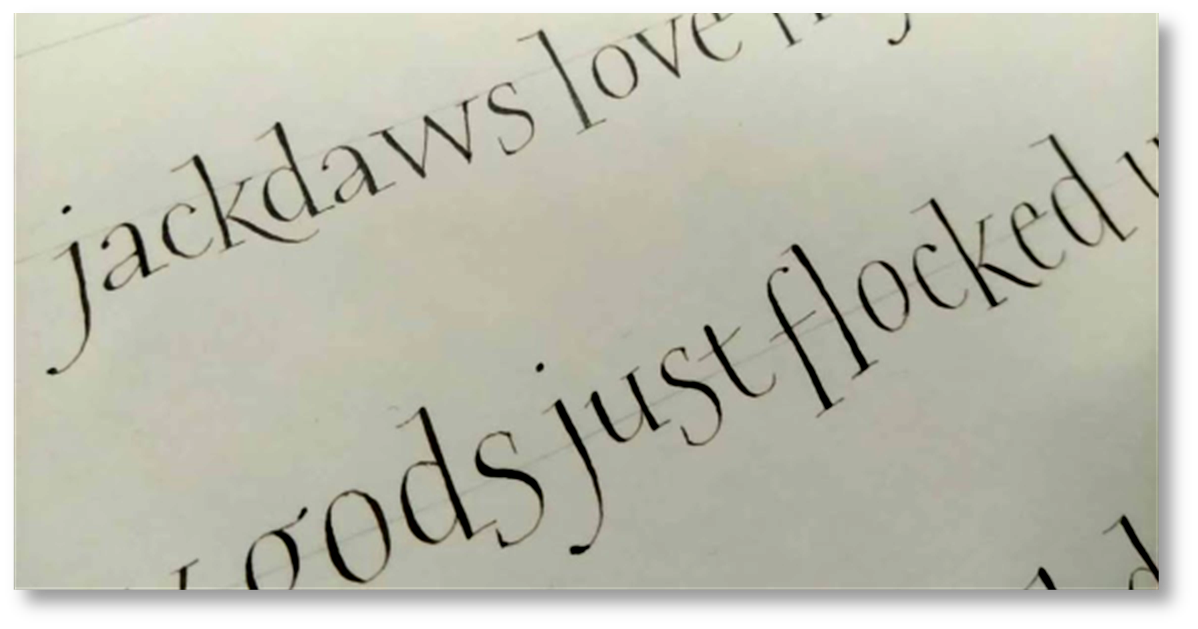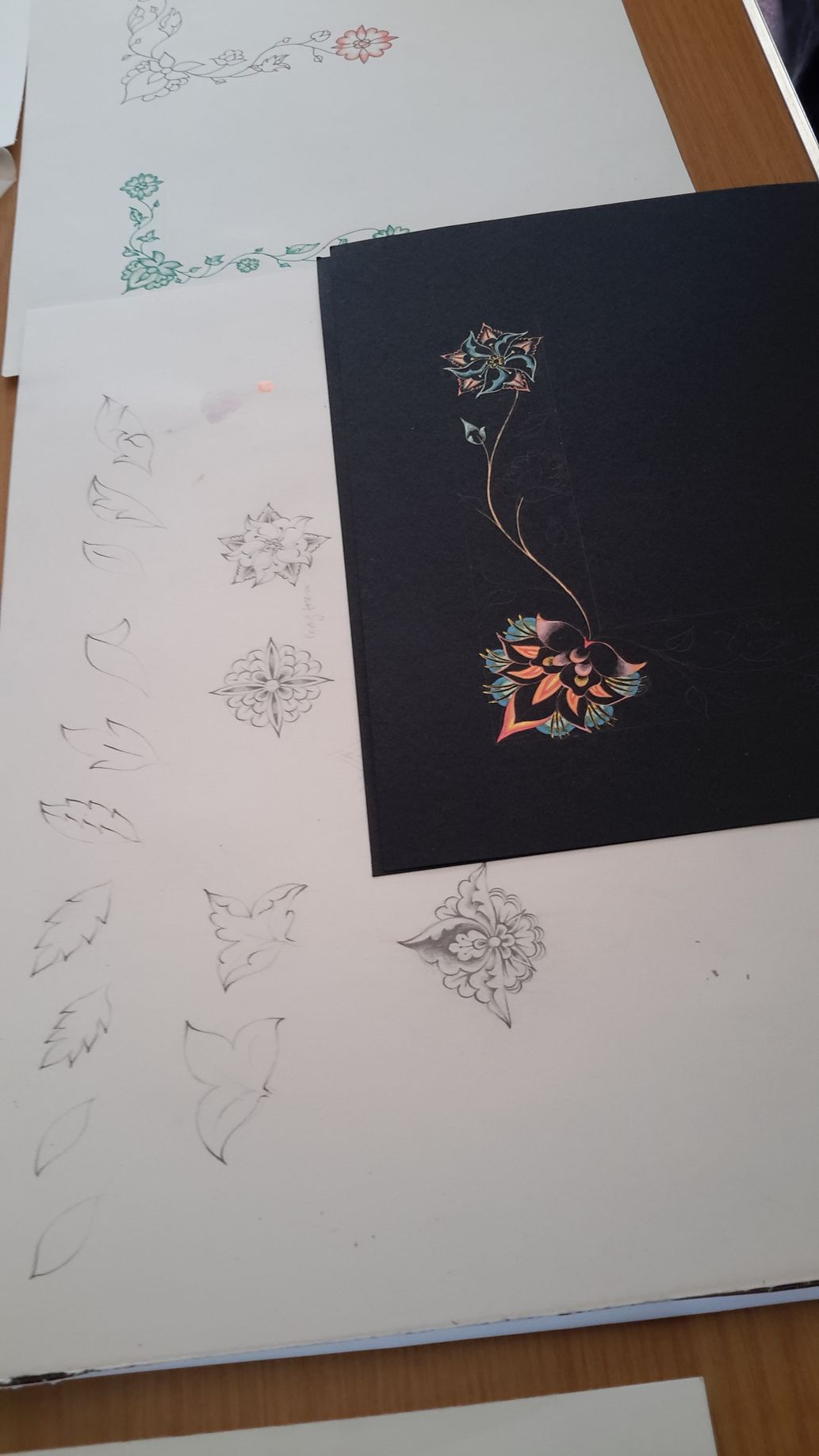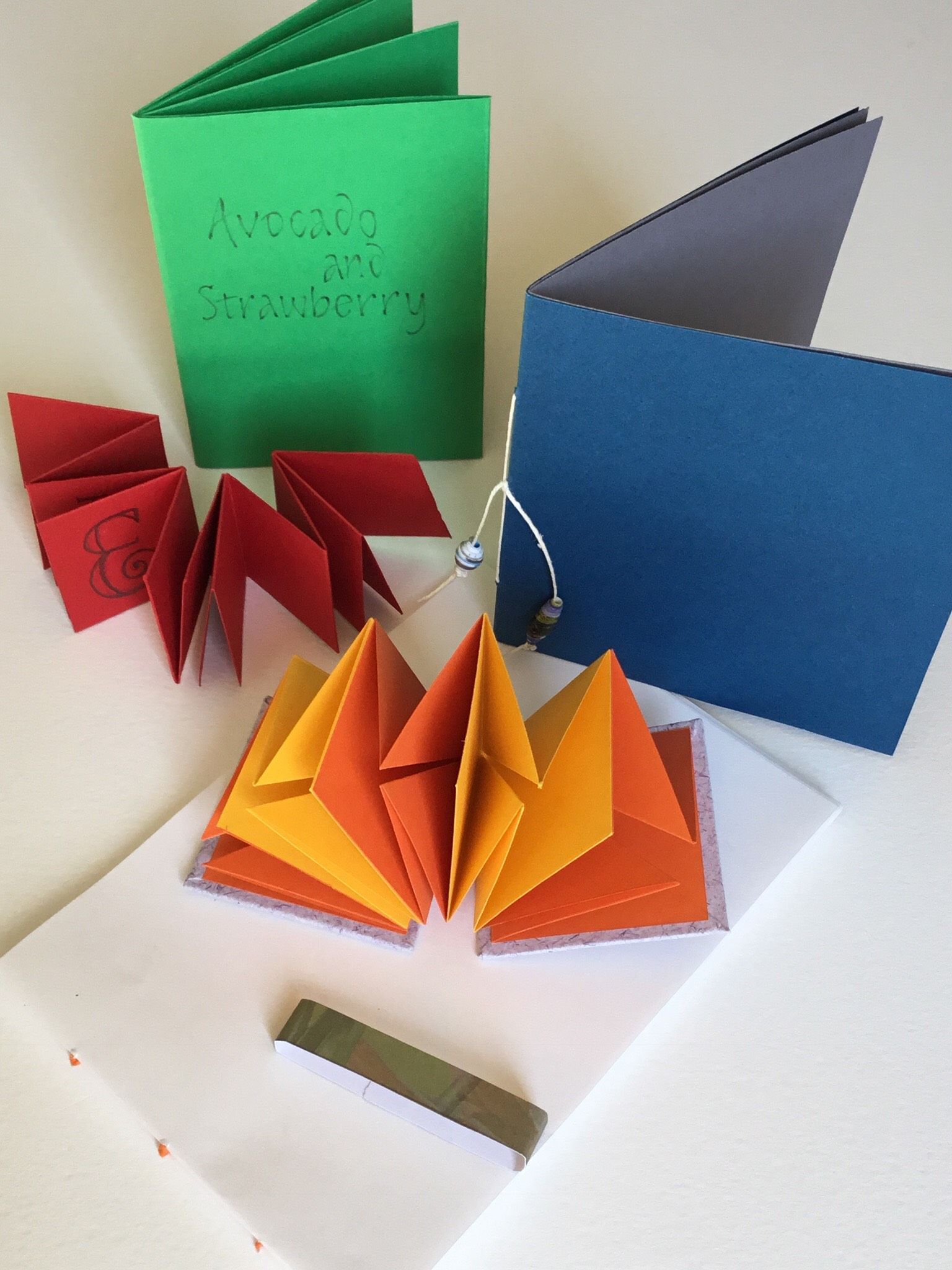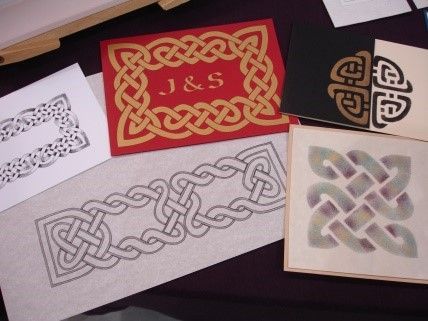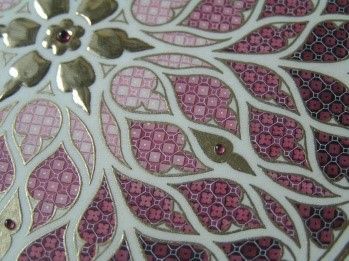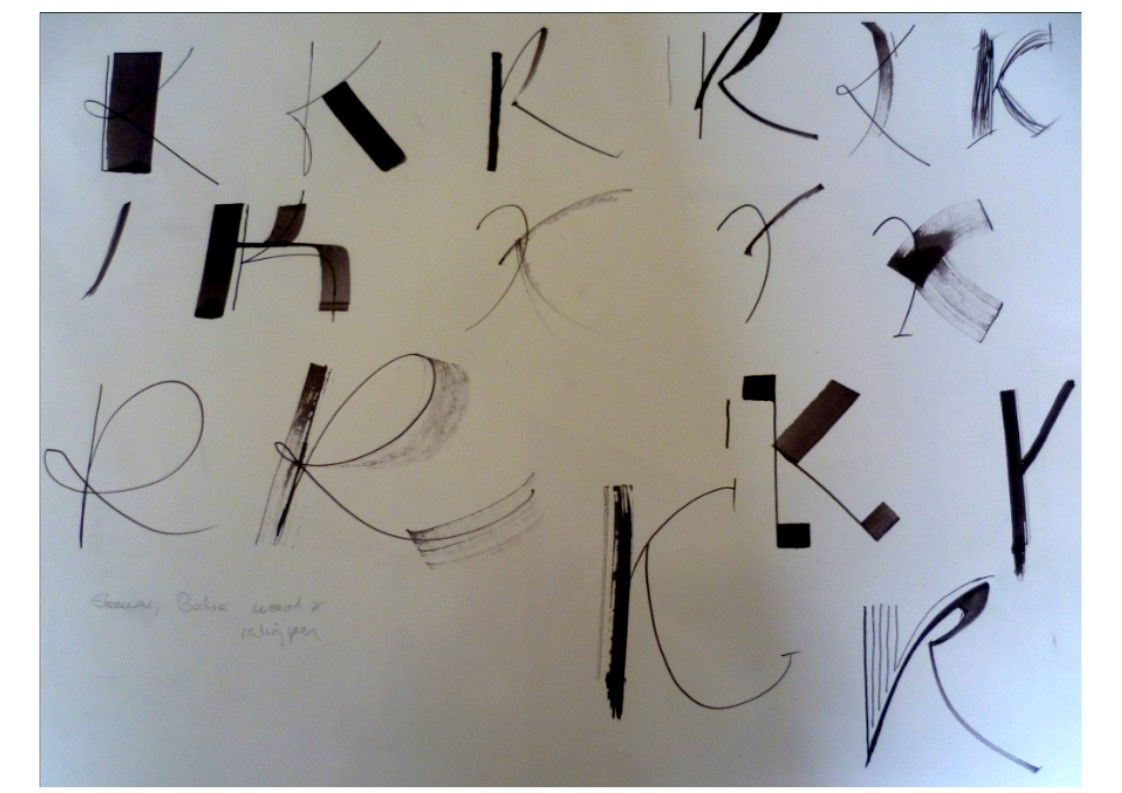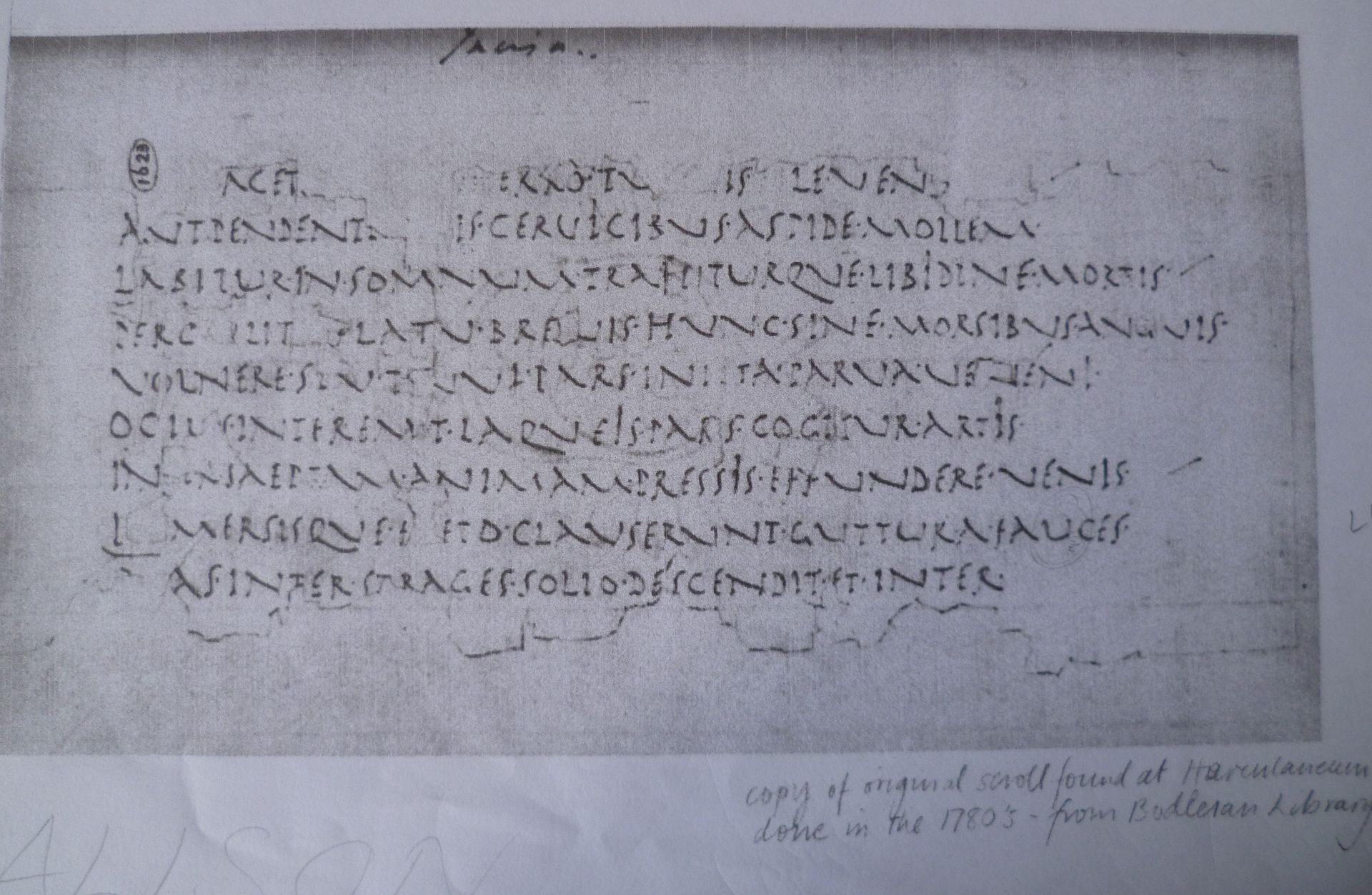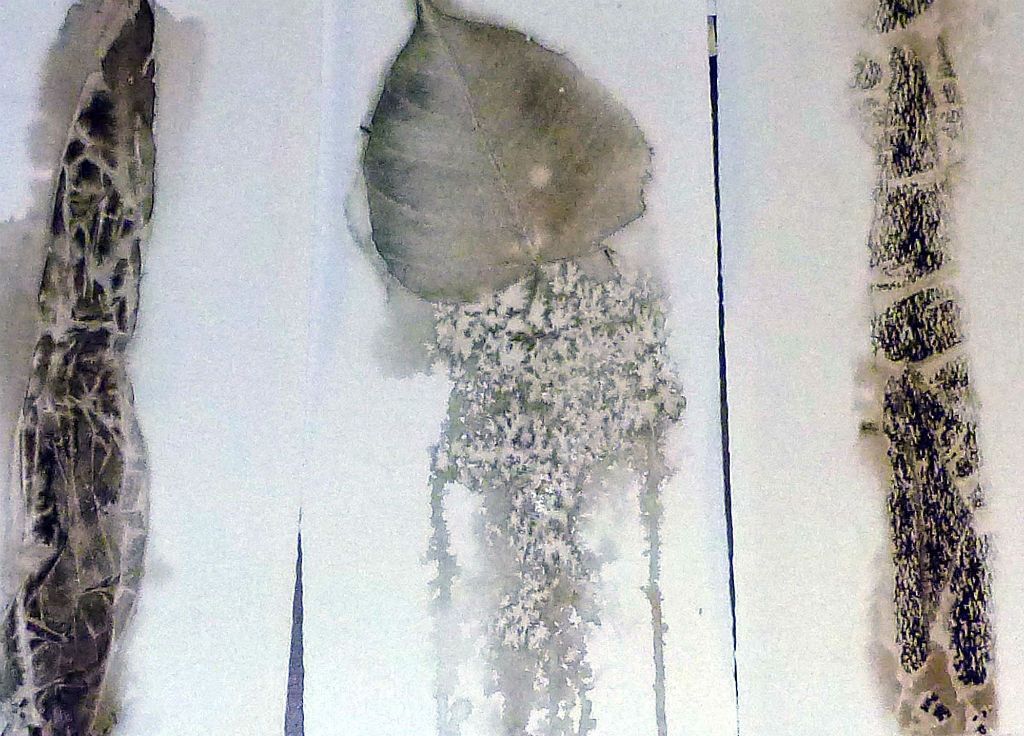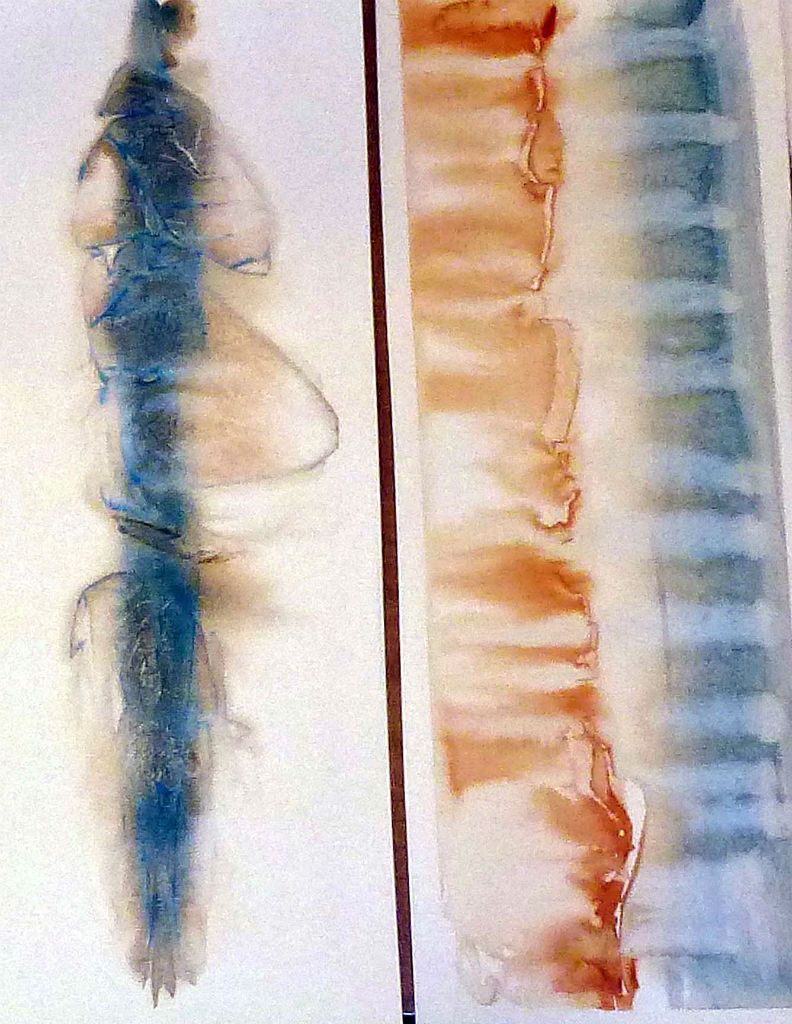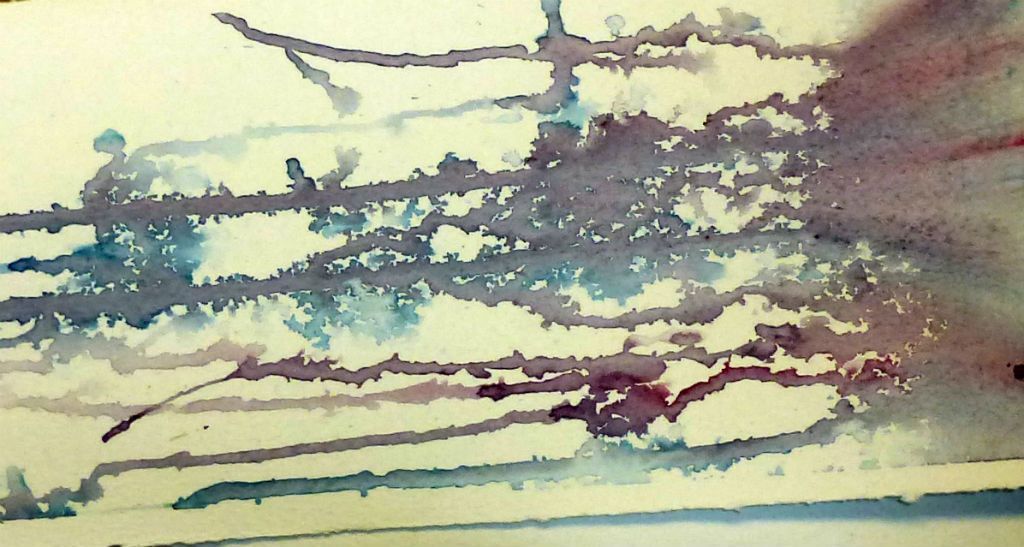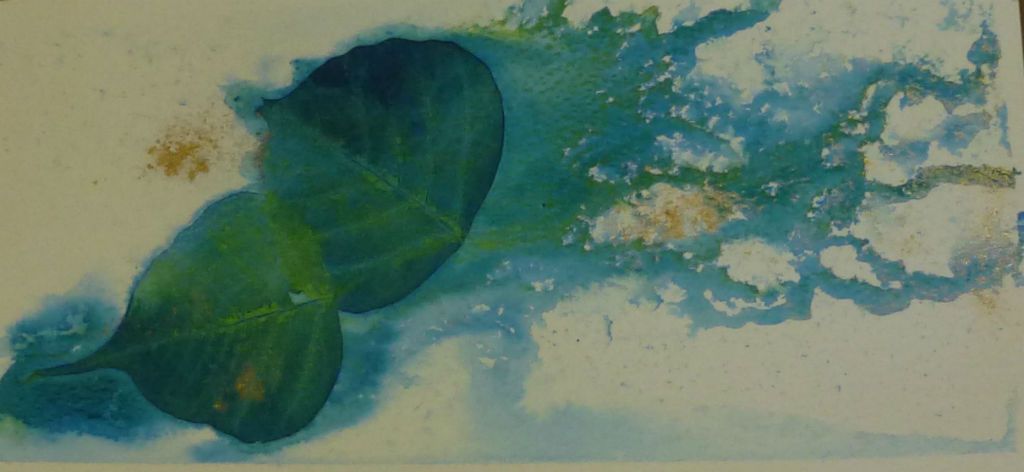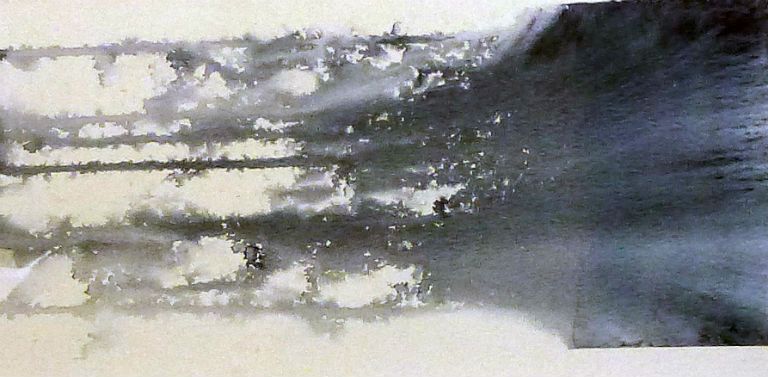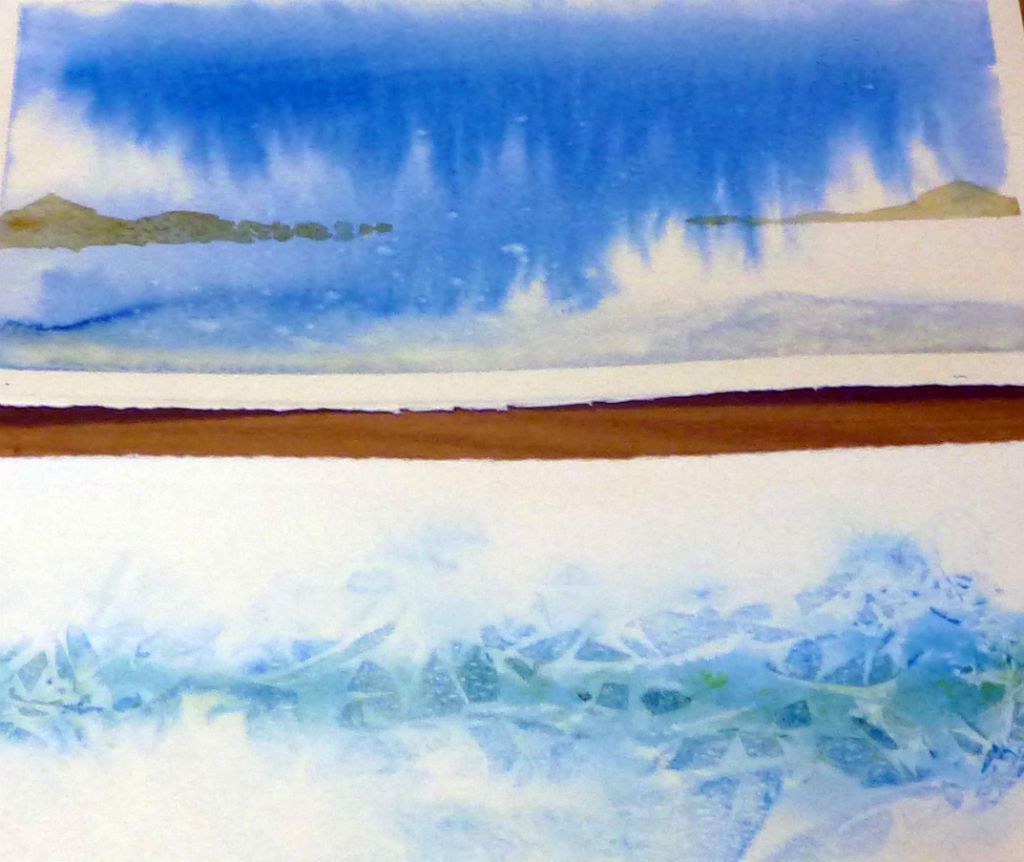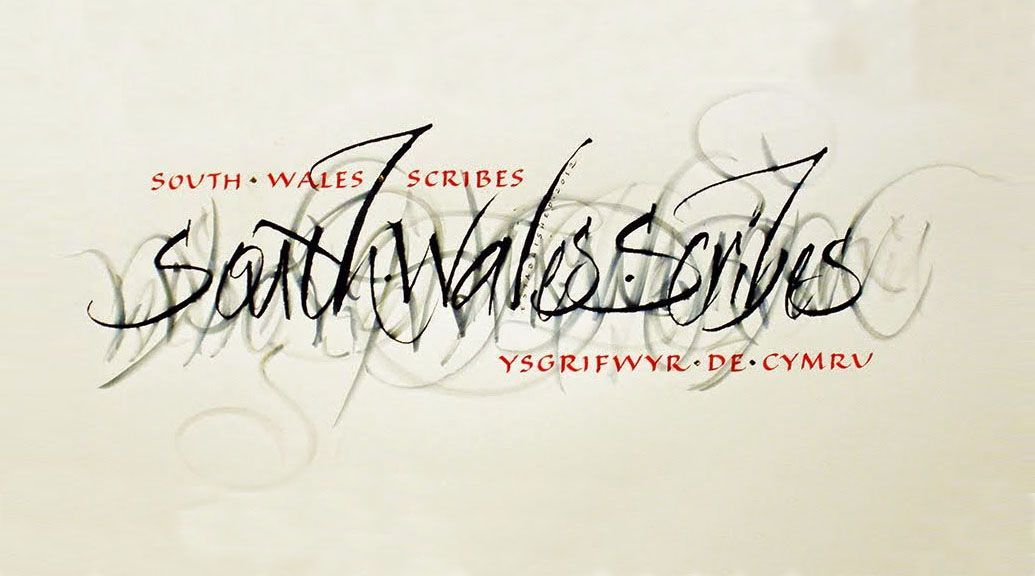Workshops
18 10 2025
Bouncy Foundation Hand
with Mary Noble
Reviewed by Grace Birt, Alison Allan and Lesley Romano
It was lovely to welcome back Mary Noble for this varied and challenging day.
There was something for everyone in this workshop; from the beginners able to benefit from the wealth of experience and advice on offer from Mary in developing their basic Foundational hand, to the more experienced grappling with making effective use of ‘contrast’ as a layout design device.
Mary made the Bouncy Foundation look deceptively easy when she produced individual place-names for all 18 participants on the spot ... when in fact it was quite a challenge for the rest of us!
Our day was made up of four main activities:
Activity One: We began our work by writing the alphabet in 'foundation hand' and focusing on our best letter 'o'. The proportions of this letter would help keep our letters regular.
Activity Two: This was where we began to 'bounce' our letters, with a pencil or ‘biro’ at first. We tried not to take our pens off the paper and ensured we kept a 'high symmetrical arch' ... unlike the low sprung asymmetric italic arch.
Activity Three: We progressed from a pencil or biro, via ruling pens and monoline Speedball ‘B’ series nibs, through to broad edge nibs. We worked our way up through the nib sizes to the very broad ‘automatic’ type pens. The more experienced amongst us tried pen manipulation, rolling the nib. Ensuring there was plenty of ink on the nib certainly made this easier.
Activity Four: Next we began designing a small ‘contrast’ piece to include thick and thin pen work. When we were happy with our layout, we were encouraged to add colour to the piece.
“A thoroughly enjoyable day learning about how to vary the formal Foundational hand to give it some spring and lightness, as well as seeing the effect of using different tools, like ruling pens and “blobby” script pens. And being reminded of the role of using contrast in script size and weight when designing a piece.” Alison
At the end of our workshop, it was lovely to see the different ideas and interpretations put on display. There was a lively discussion about our work, with Mary giving valuable and insightful feedback on each piece.
Throughout the day Mary was very generous with her advice and was thanked by us all for her expertise, hard work and encouragement. She certainly presented a more flexible Foundational and opened up a world of possibilities.
Thank you very much to Mary!
12 | 07 | 2025
Monograms and Cyphers
with Peter Lloyd
South Wales Scribes were delighted to welcome back tutor Peter Lloyd after a very well received workshop on Saxon Scripts and Runes in April 2024.
Reviewed by Grace Birt, Val Carter and Doug Adams
Grace:
Peter began this workshop by clearing up the differences between initials, monograms, cyphers and logos … a topic that had puzzled me before. Next came our chance to experiment with our own initials using Roman capitals.
After demonstrations we were encouraged to include serifs, extend and interlink letters, use different style lettering, introduce a third letter, interchange upper and lower case letters, include symmetry as well as change in weight, size, shape and colour of our designs and ideas. The design process was certainly challenging but really interesting and I think we were all amazed how we eventually moved from something quite primitive to such complex images for the final piece.
Having worked through a process in such detail and with Peter's positive guidance, I feel more confident to produce more of these fascinating pieces. I think we all found this day extremely useful.
Val agreed and commented that ‘Peter's workshop on Monograms and Cyphers was a delight due to his enthusiasm for his subject and his skill at getting it across’ ... ‘He involved the whole group while discussing an individual's work’ in a supportive and encouraging manner. We learnt a great deal about the difference between, and the execution of, monograms and cyphers - He also gave each one of us a bookmark with a monogram or cypher of our initials.
Doug said that the Monogram and Cypher theme was a new subject that he’d ‘not really thought about before’.
He appreciated the interesting ideas from Peter as well as other members and liked the emphasis on 'thinking outside the box'. He plans to use some of the ideas for birthday cards.
The day concluded with an excellent ‘come together’ review which was appreciated by many attendees. Val summed it up by saying that ‘All in all it was a most enjoyable and instructive day.’
Thank you once again Peter!
26 | 04 | 2025
Egg Tempera Painting
with Alma Swan
Egg tempera, a paint composed of pigment bound by egg yolk, is an ancient painting medium which has been used for many centuries in India, Egypt and Europe. Egg tempera is very long-lasting and examples are still in existence date from the first century AD. Importantly for artists, egg tempera is a translucent, glowing medium which gives paintings a complex brilliance and luminosity that is not matched by any other medium
In this workshop Alma showed us how to make egg tempera paints from scratch and how to apply them in trials overlaying colours to demonstrate the translucency of the medium. Finally we created a small painting and in doing so we covered most of the techniques that can be used when painting with egg tempera.
We also made our own tracedown using layout paper and fine red clay (Armenian Bole) which gave a remarkably clean and clear transferred image.
SWS Member Grace: ‘Hearing about the history behind the use of egg tempera in manuscripts and icon painting was very interesting … and holding Alma’s beautiful icons and seeing the detail was something really special.'
She plans to use egg tempera for some illustration to go with her calligraphy pieces. ’The subtle sheen certainly catches the light and will add a special touch to the work.’
SWS Member Joan observed that the process of making the egg tempera was quite complex but wasn’t deterred and planned to source pigments and materials to try the process at home. Many of the techniques were also new to SWS Member Debbie who found the layering and luminosity of the medium interesting and plans to incorporate the techniques in a border to surround a calligraphic piece.
Alma kindly supplied follow up information about the materials and equipment used in the workshop. If you attended this workshop and haven't received the supporting information please contact Alison.
Many thanks to Alma for journeying to South Wales for this fascinating workshop.
22 | 03 | 2025
Masking Madness!
Member led - Lesley and Alma
In this workshop we experimented with masking tapes and fluids, resists such as wax candles and crayons, inks, paints and fine lining pens to create interesting backgrounds and patterns. We then explored the possibilities of combining calligraphy and layering lettering to create some very personalised images.
05 | 10 | 2024
Archibald Knox Design
with Josie Brown
An introduction to the lettering and unique mix of Celtic and Art Nouveau style of decoration this Manx designer created. There is a choice of mediums to try out – one giving the unexpected effect of either stained glass or enamelling. An unusual and rewarding workshop.
This is the text area for this paragraph.
To change the text, simply click here and start typing.
08 | 06 | 2024
The Staffordshire Hoard
with Linda Lewis
New paragraph
27 | 04 | 2024
Saxon Scripts and Runes Revealed
with Peter Lloyd
A fascinating adventure into historic lettering and translation of mystic symbols to open up new avenues for you to explore.
03 | 2024 Embossing
with Keith Bolton
This embossing workshop was the first of the year and one of our increasingly popular ‘Member-led’ events. It proved to be a highly engaging day and a great start to our year of calligraphic workshops.
12|2023 Folded Star Workshop
Member-led workshop
with Alison Allan and Grace Birt

